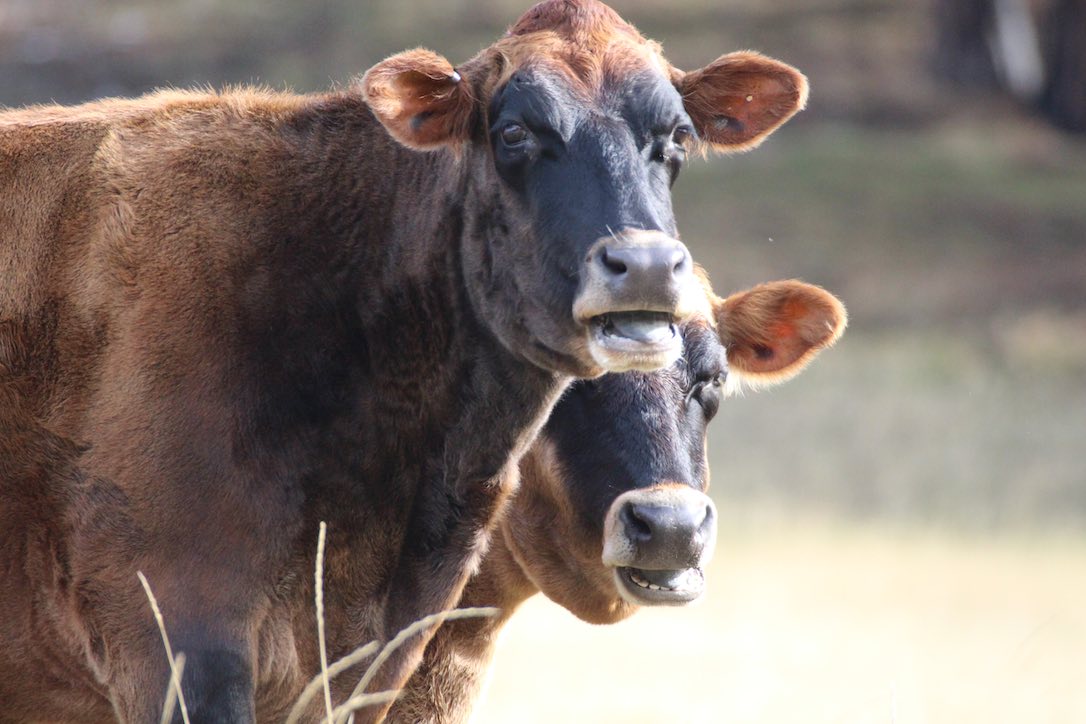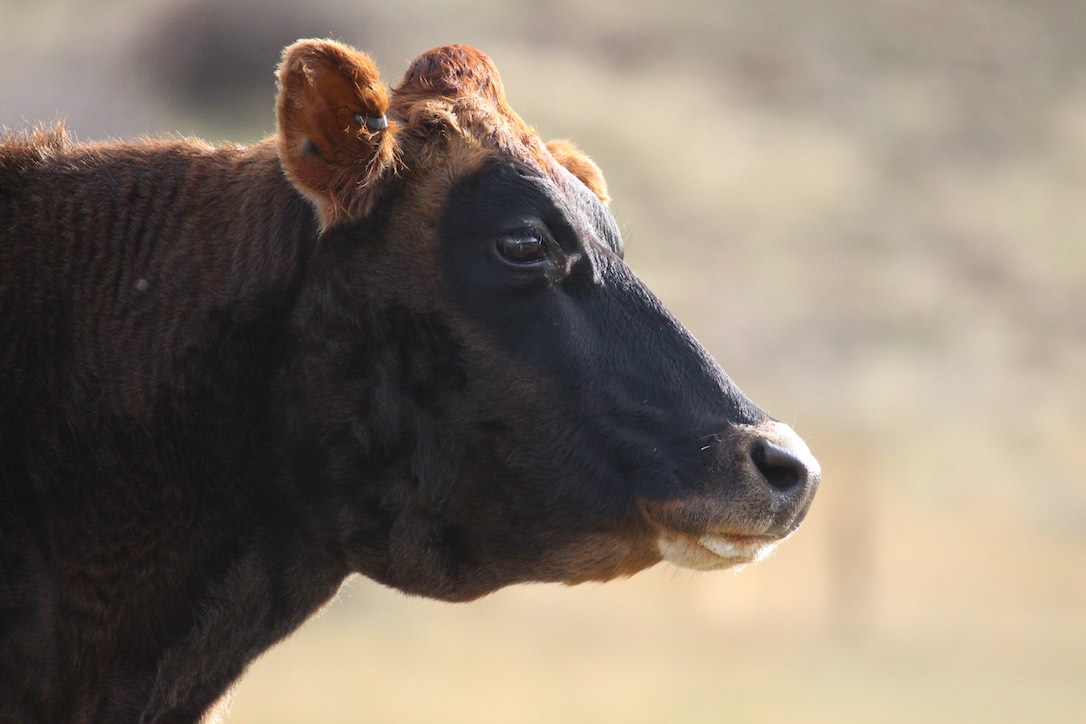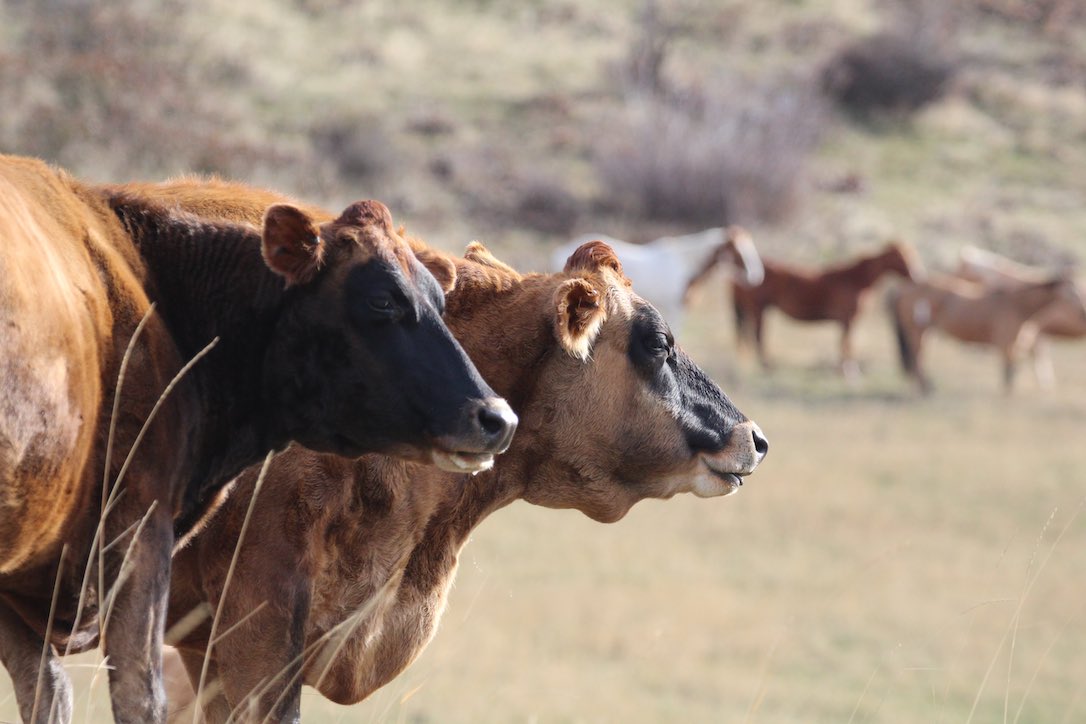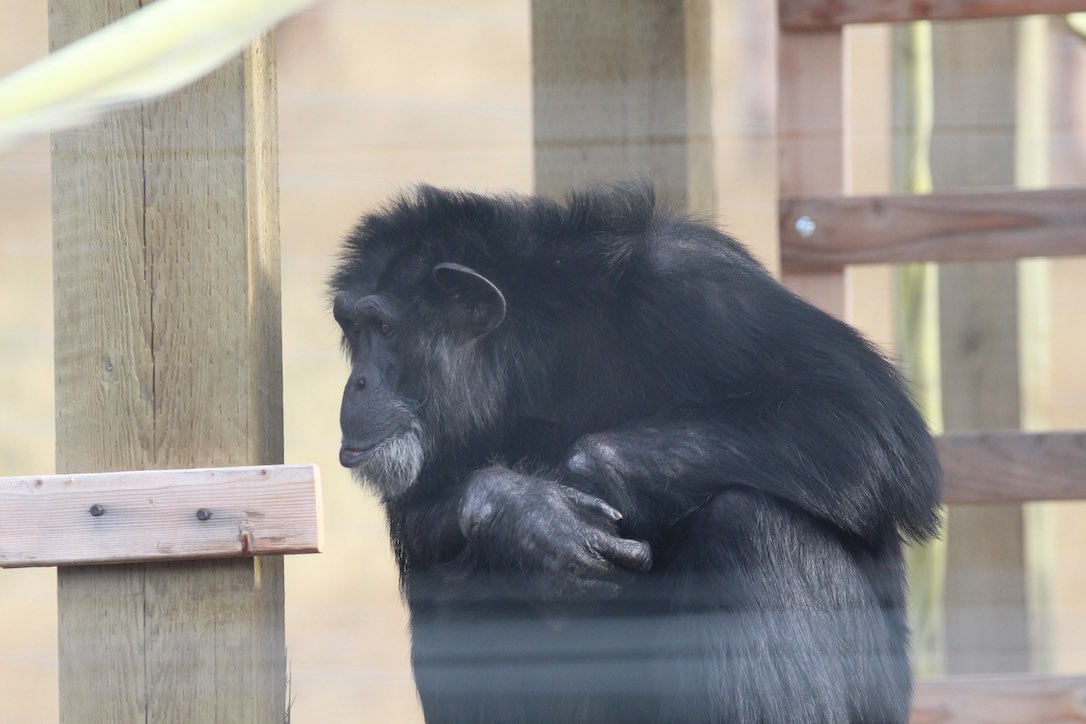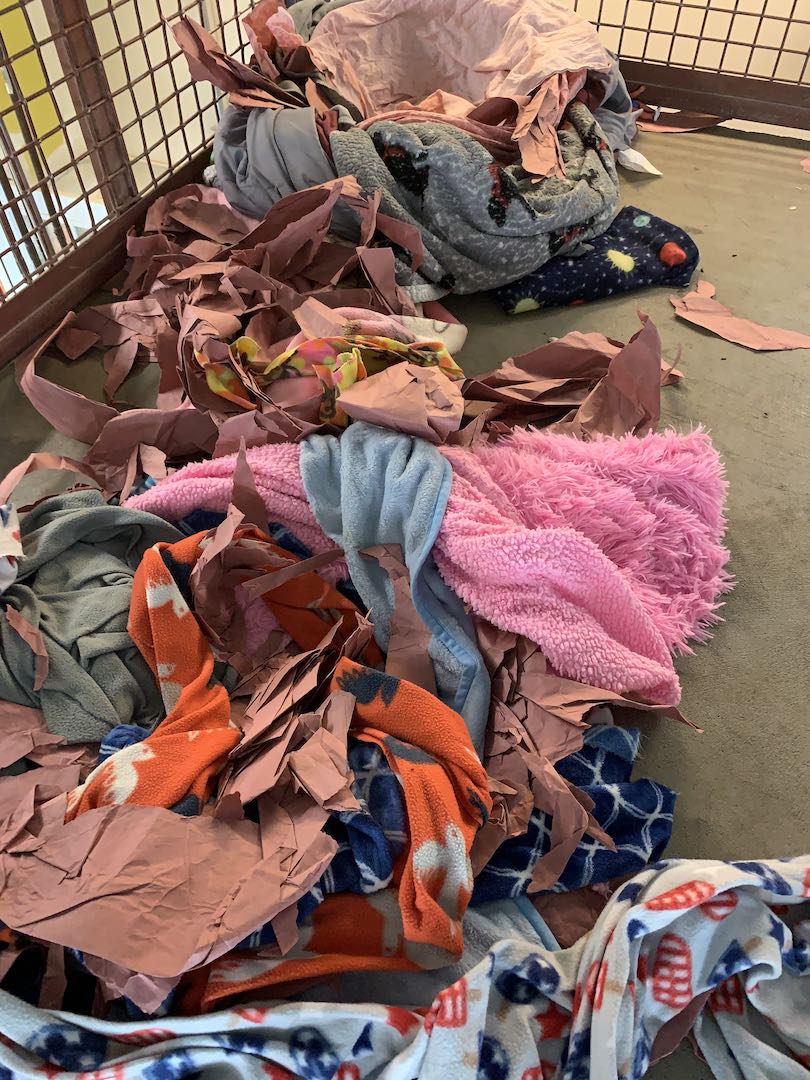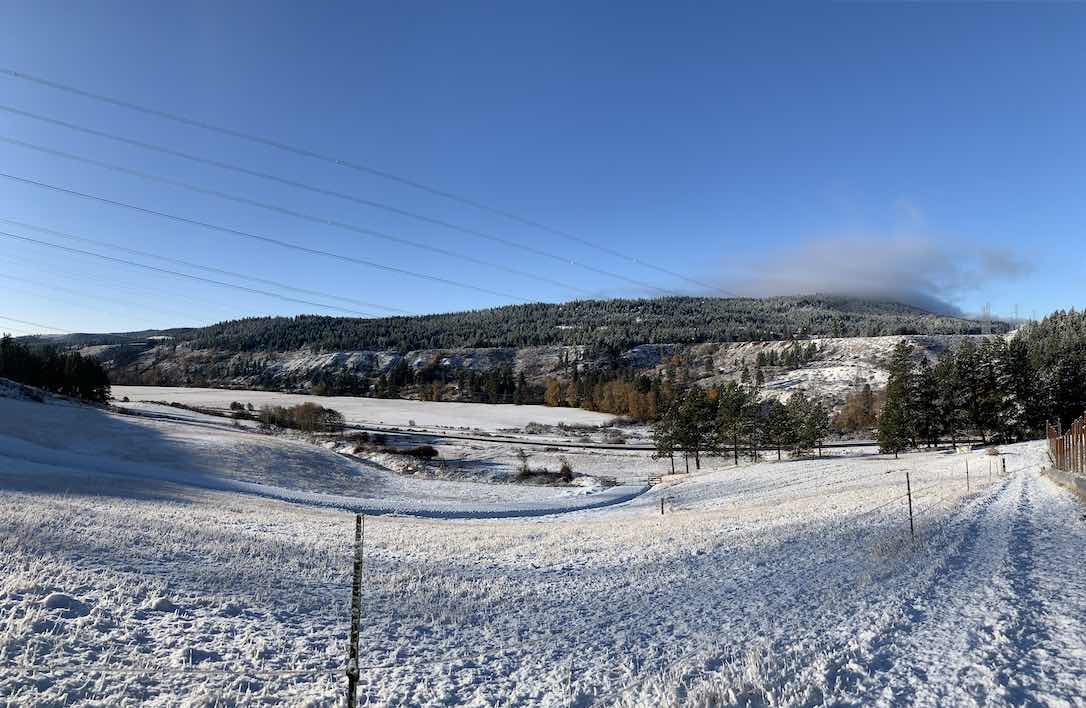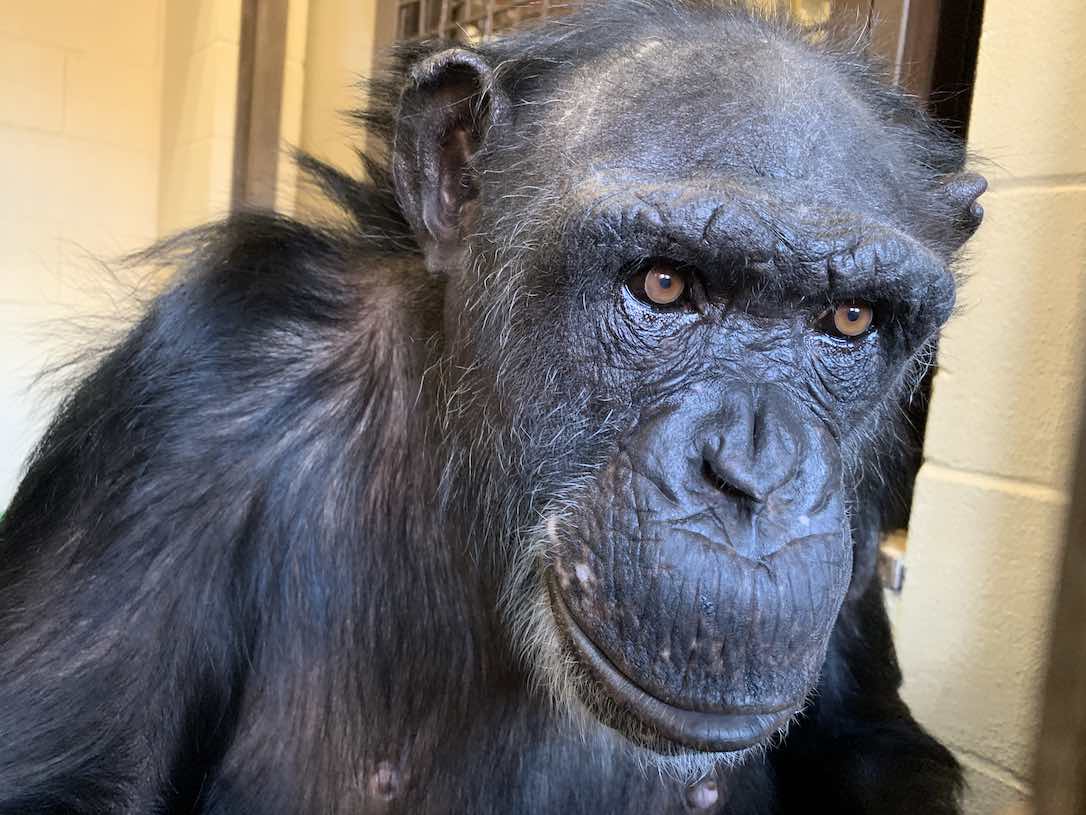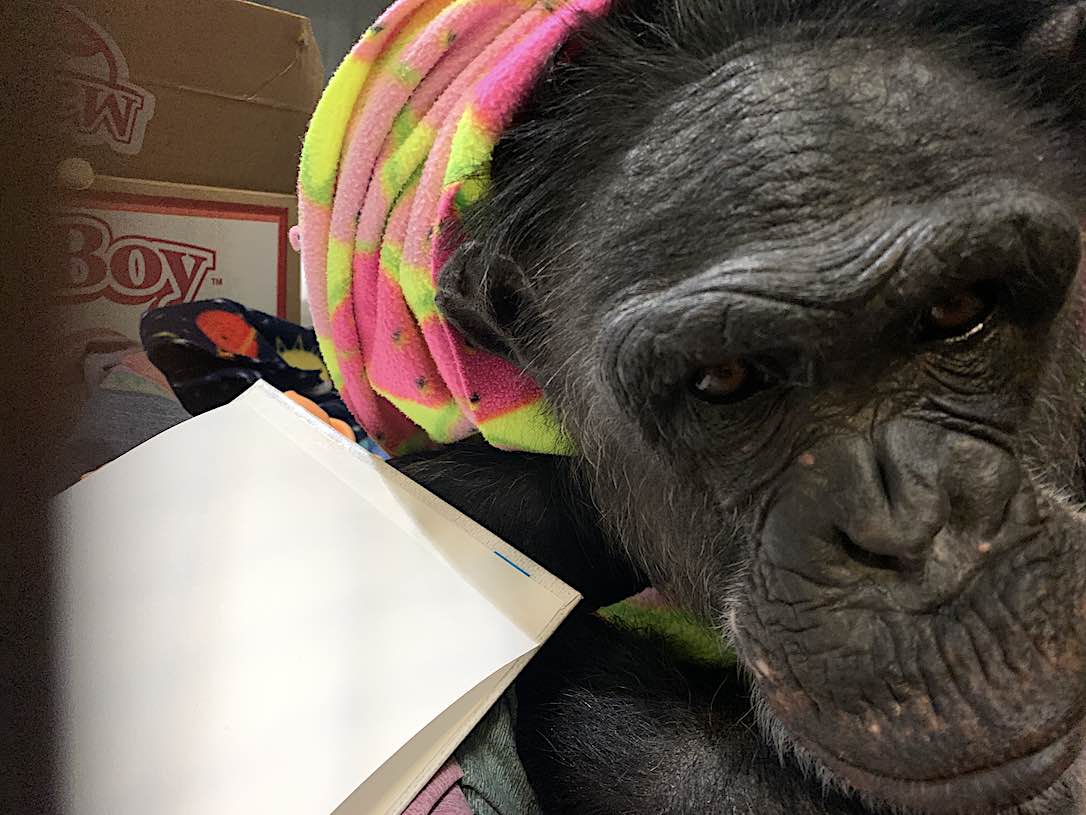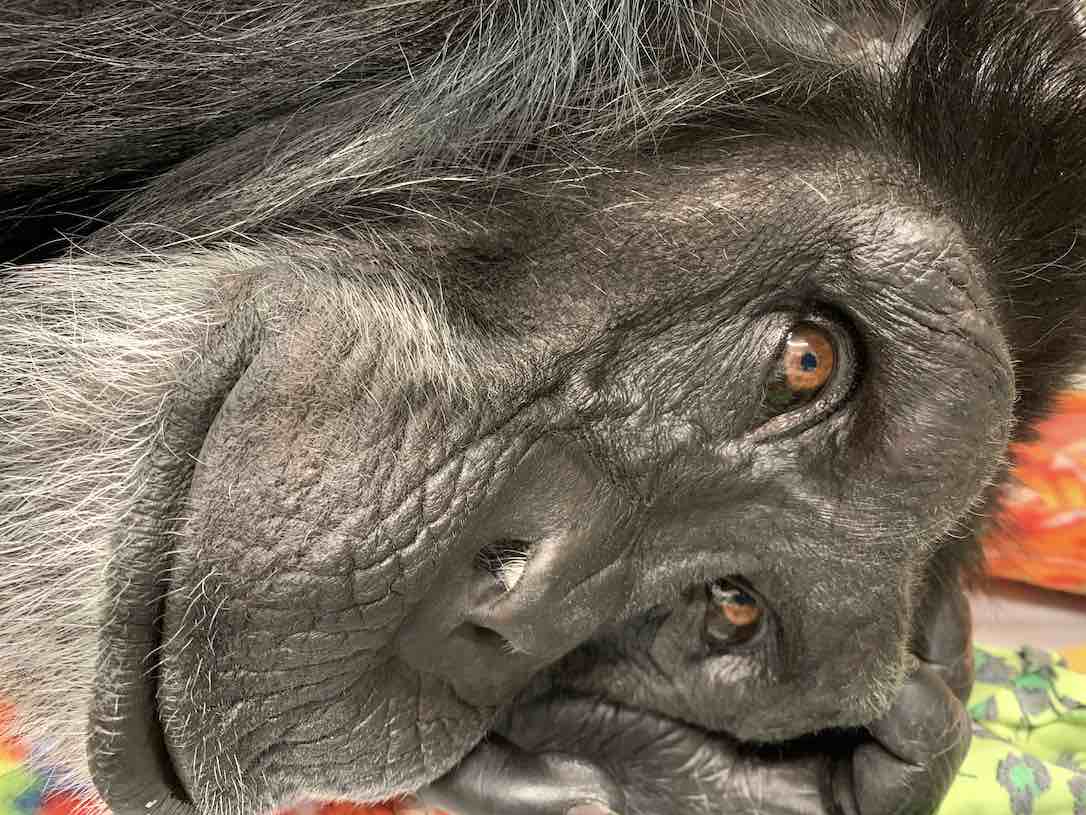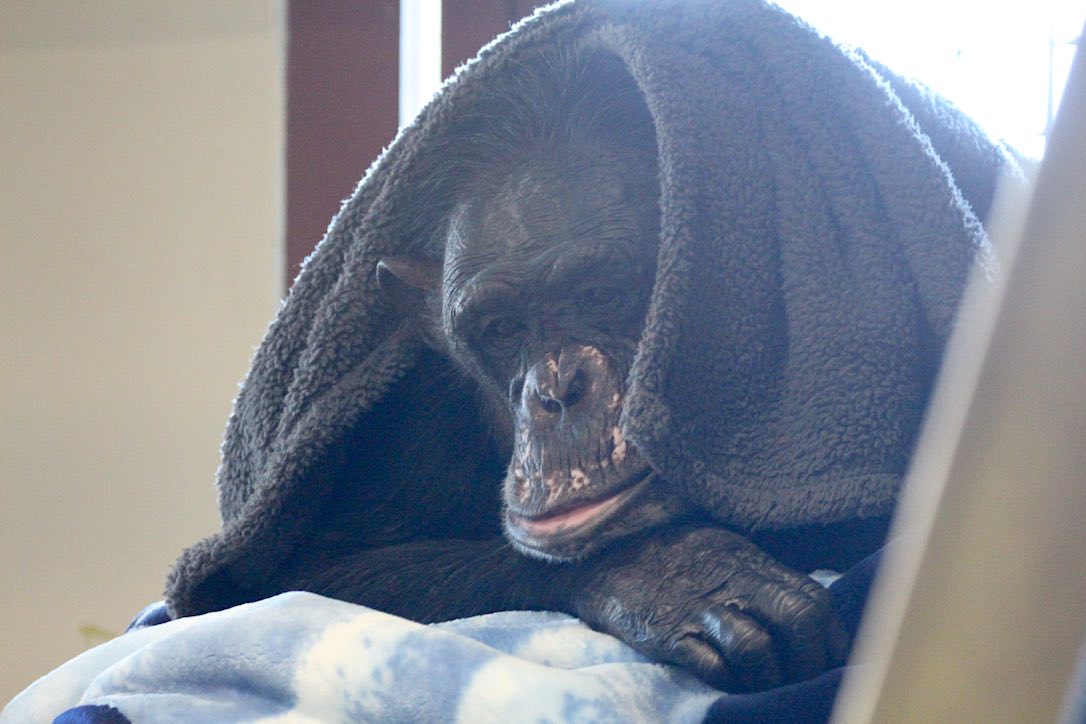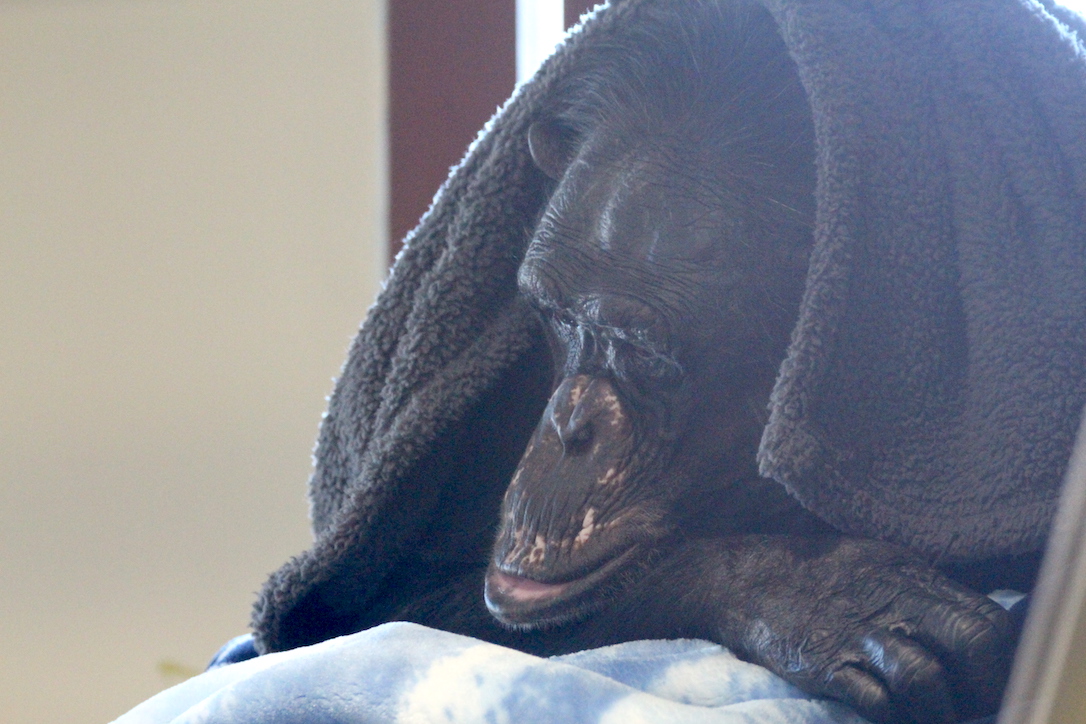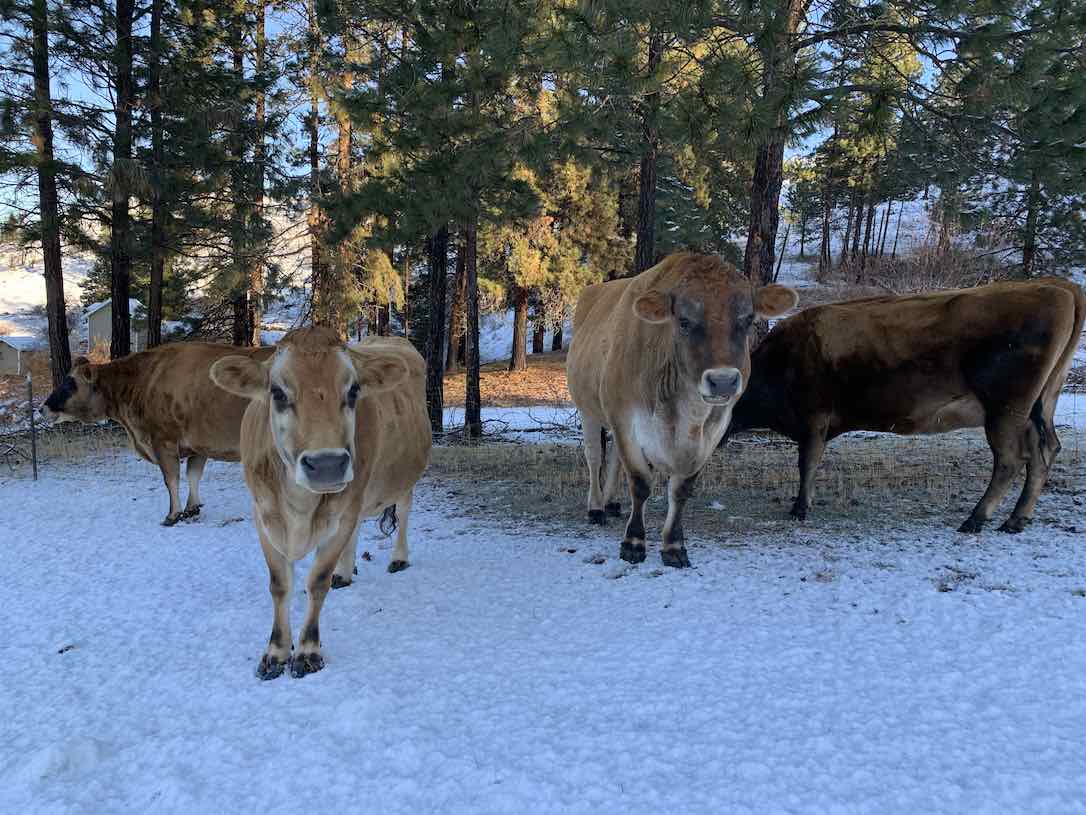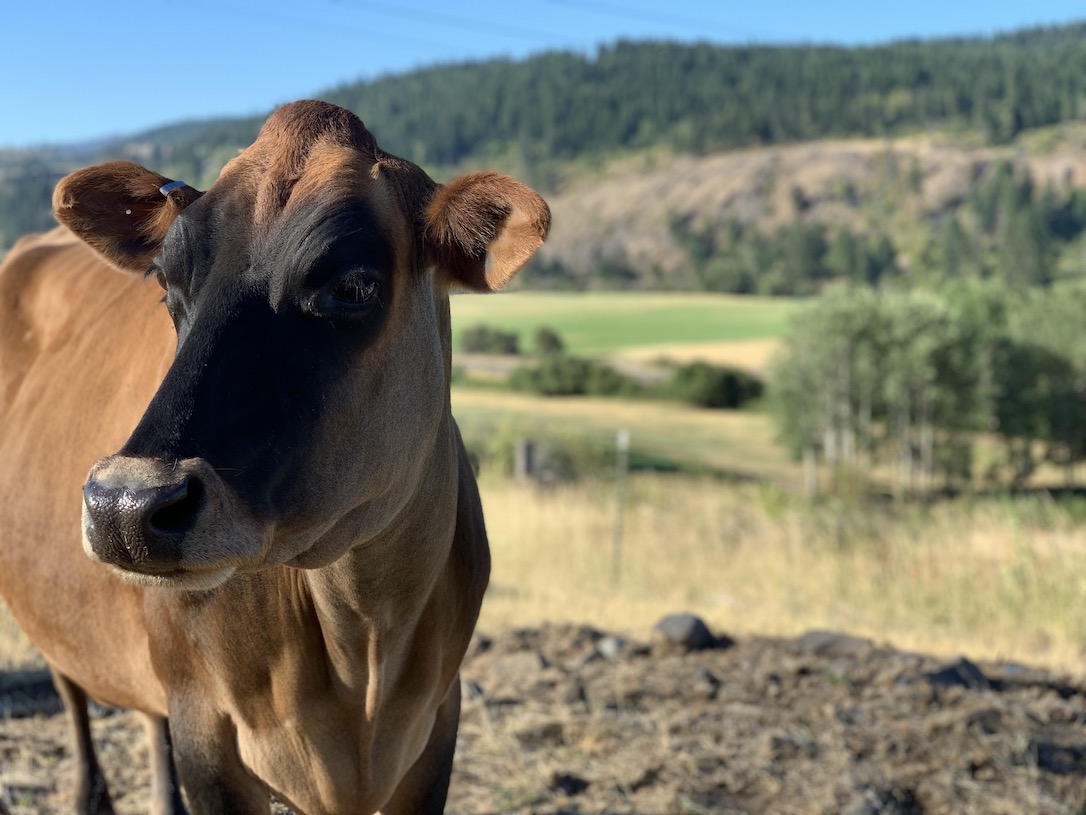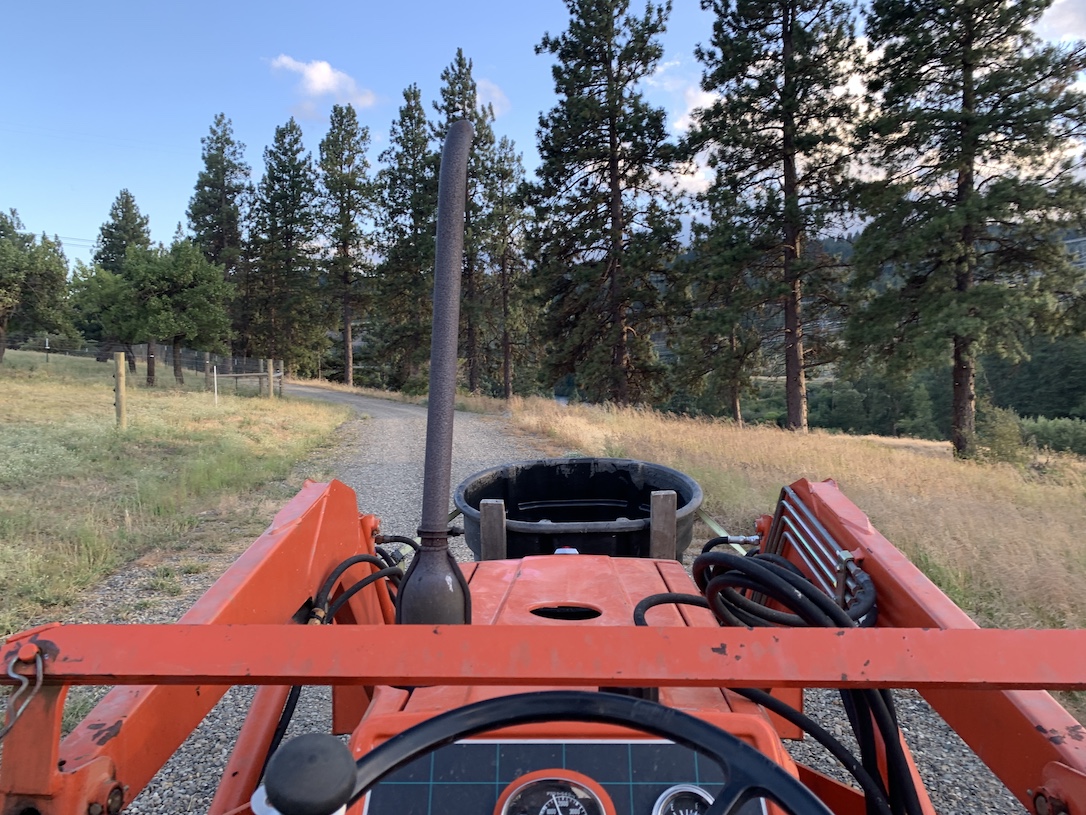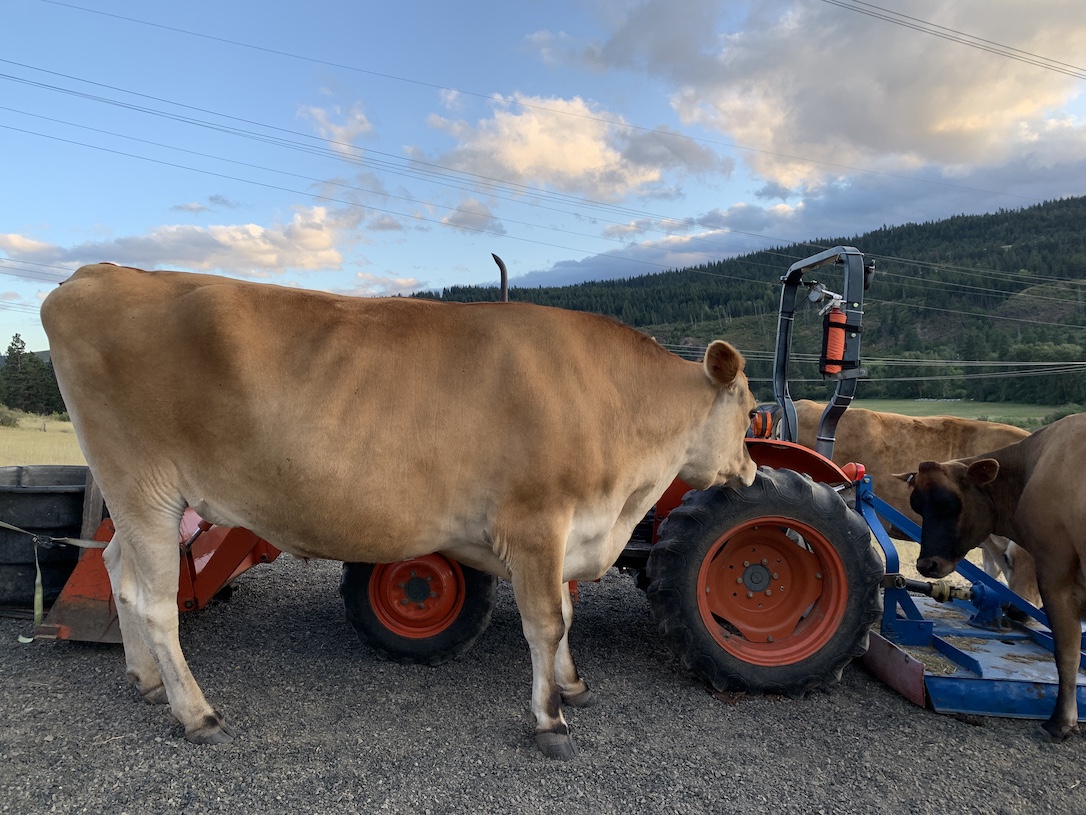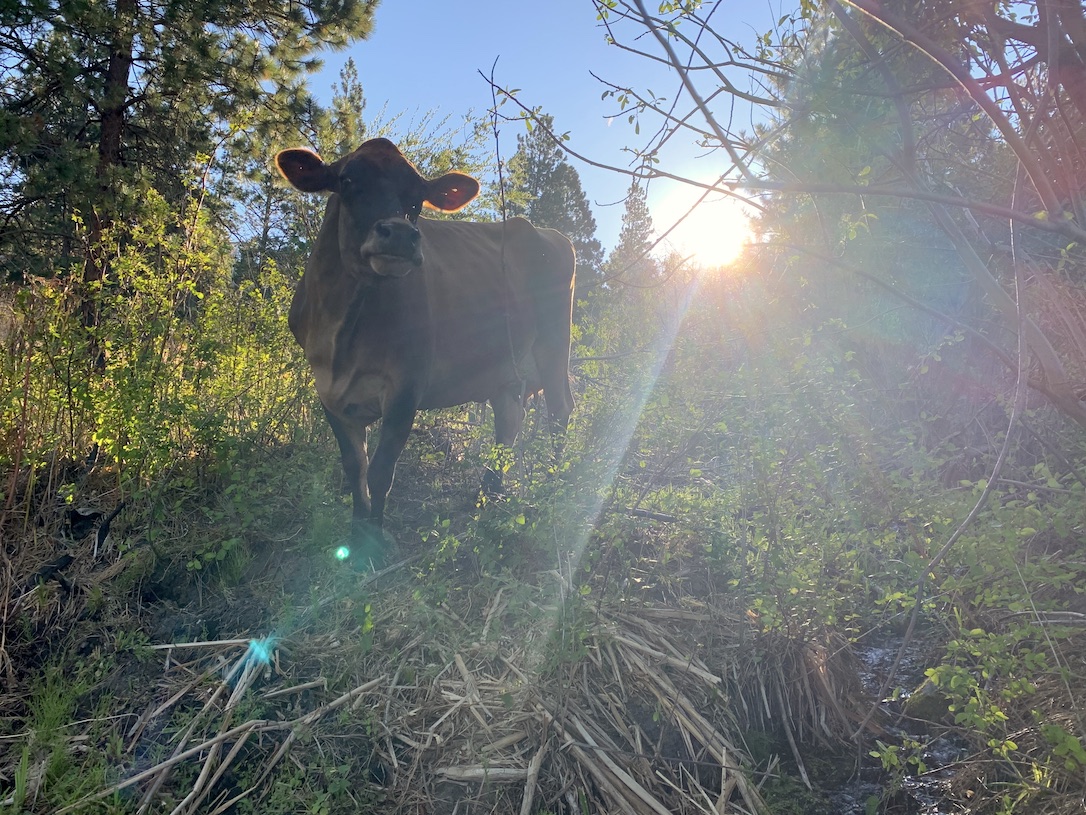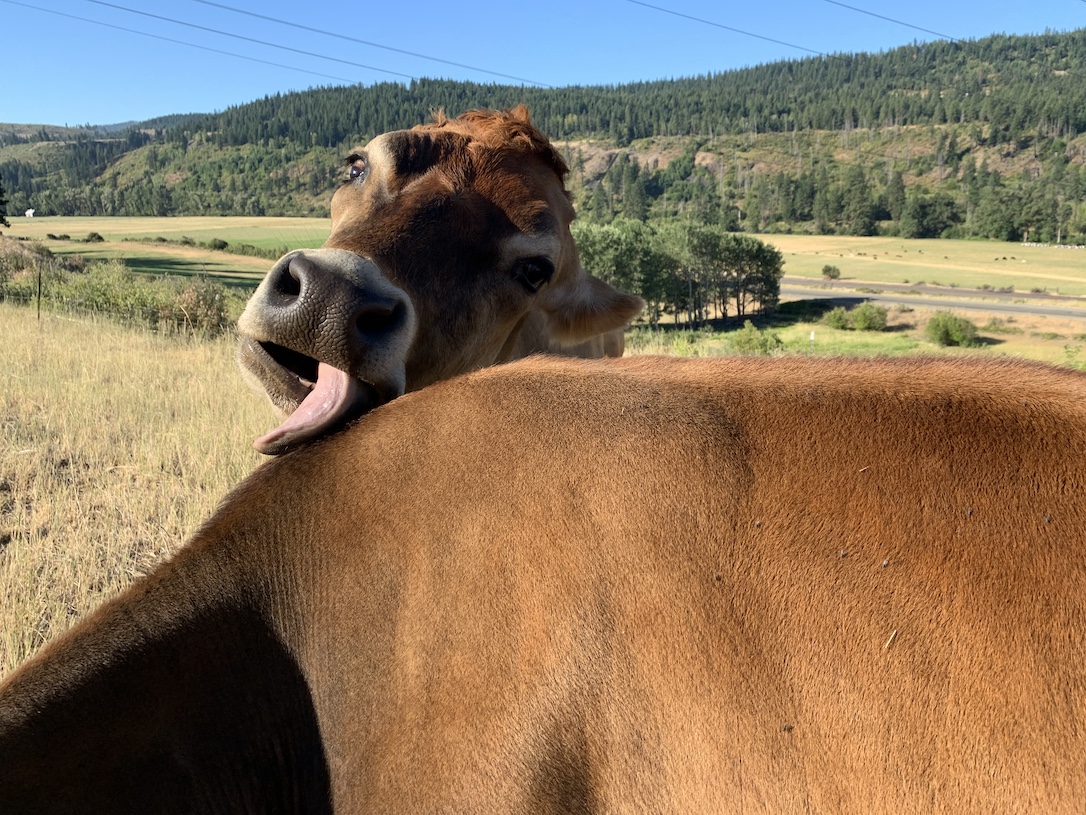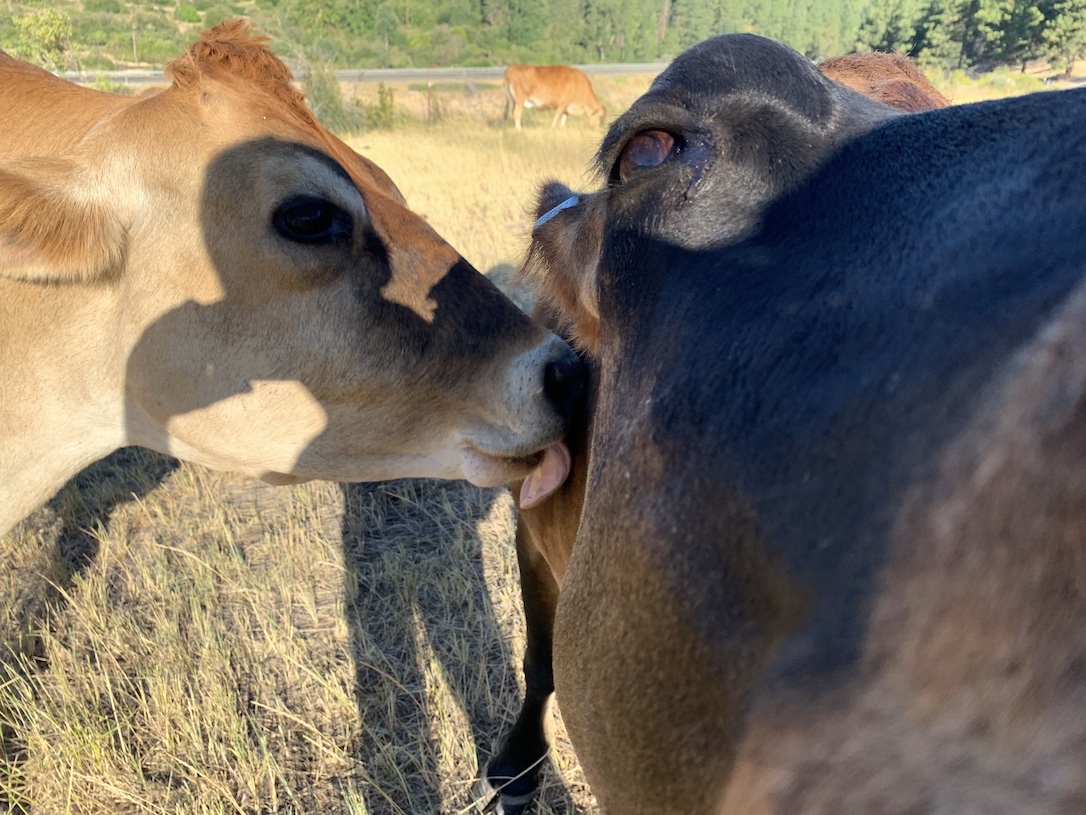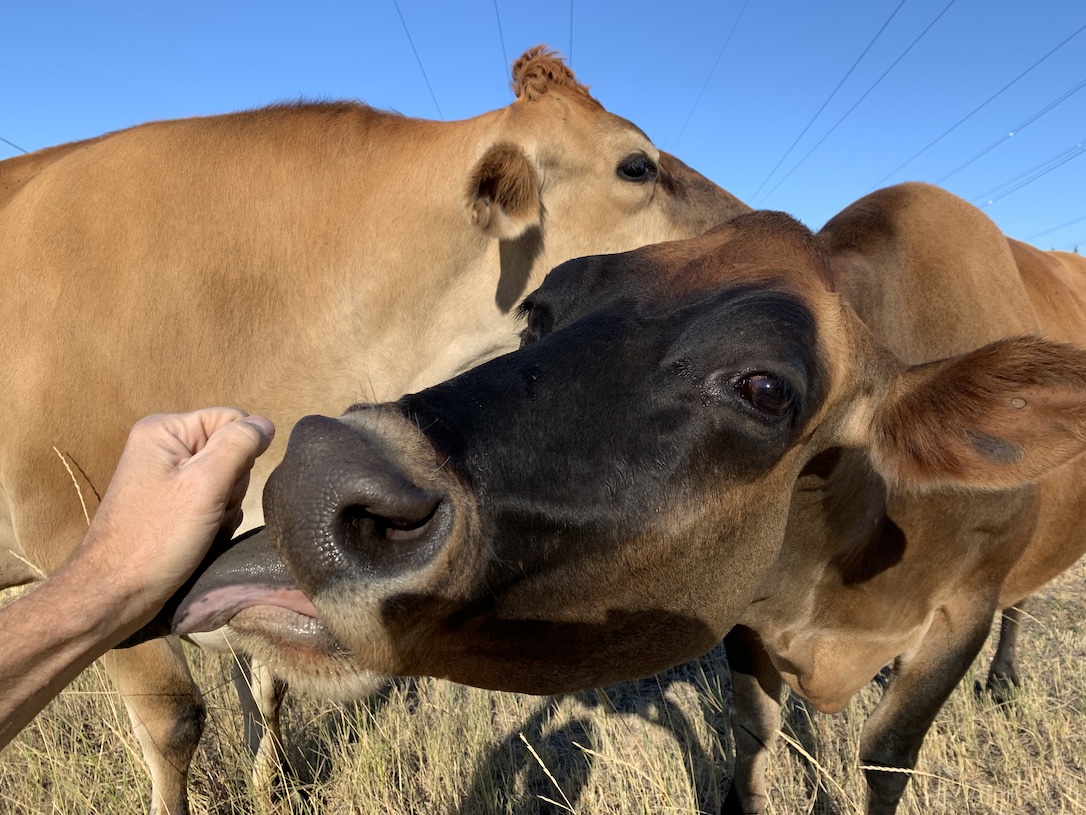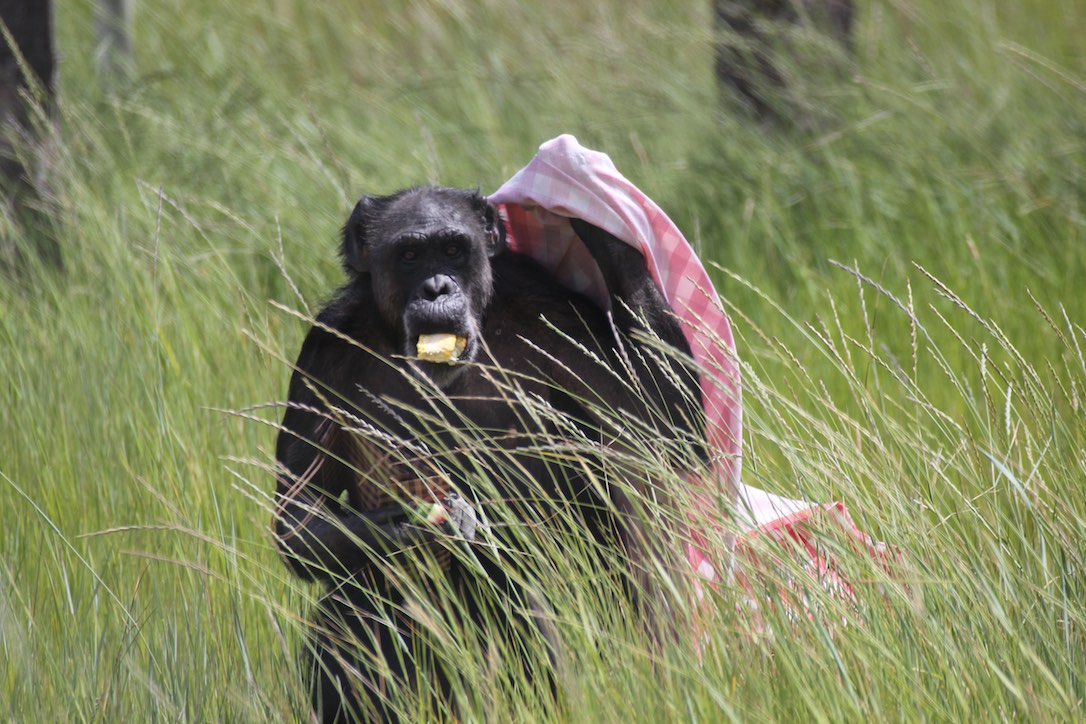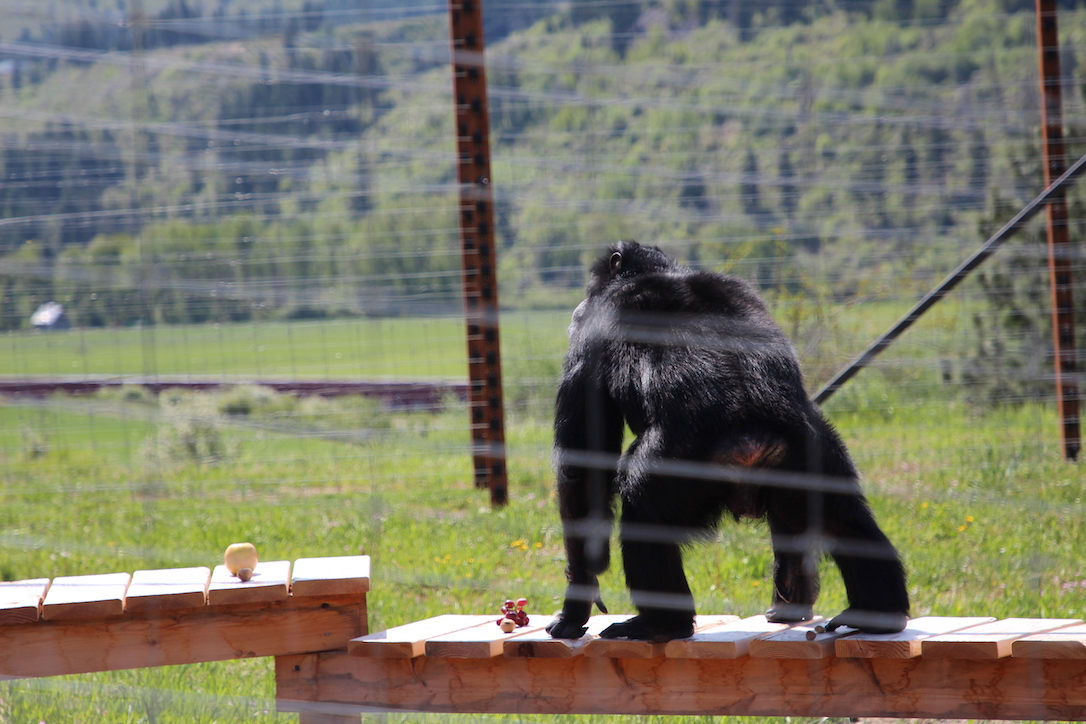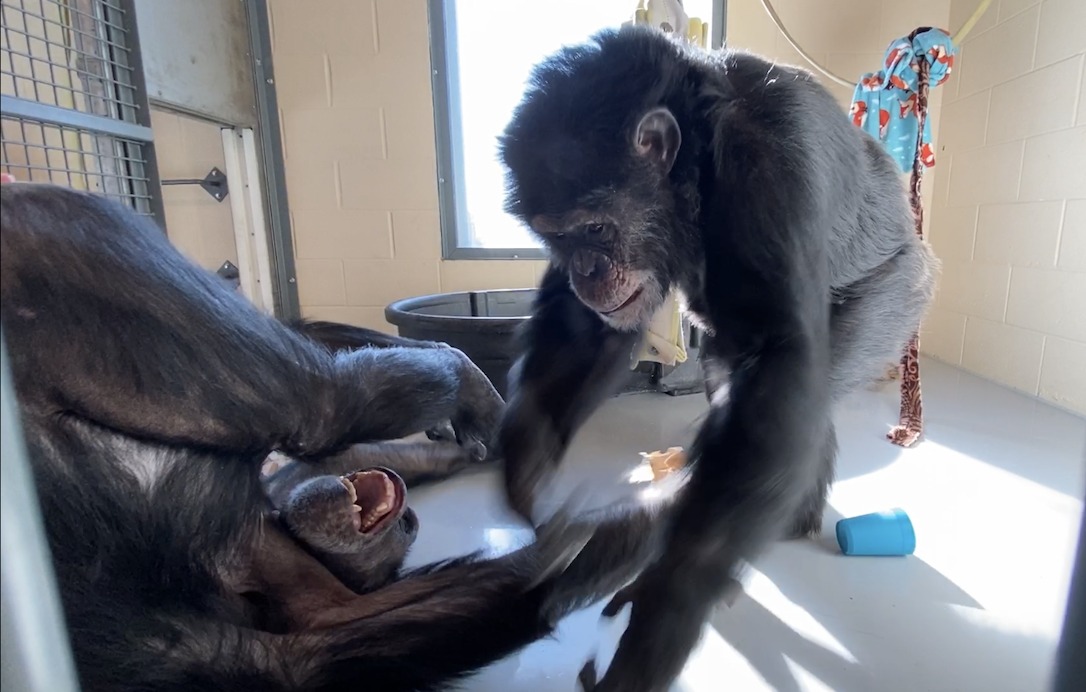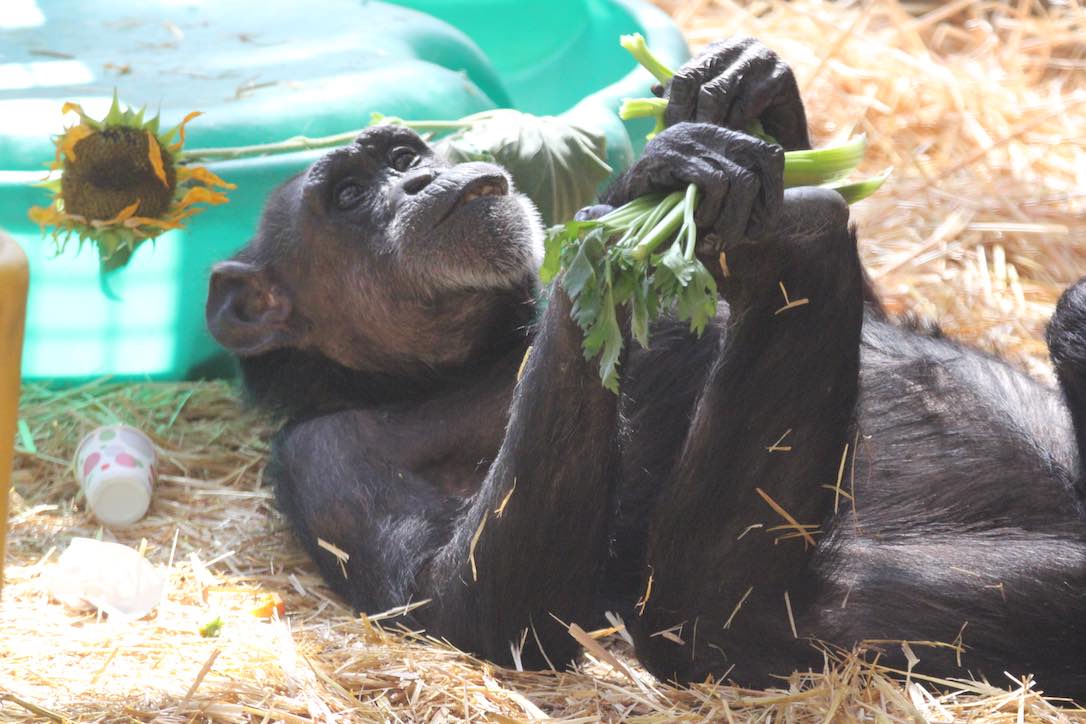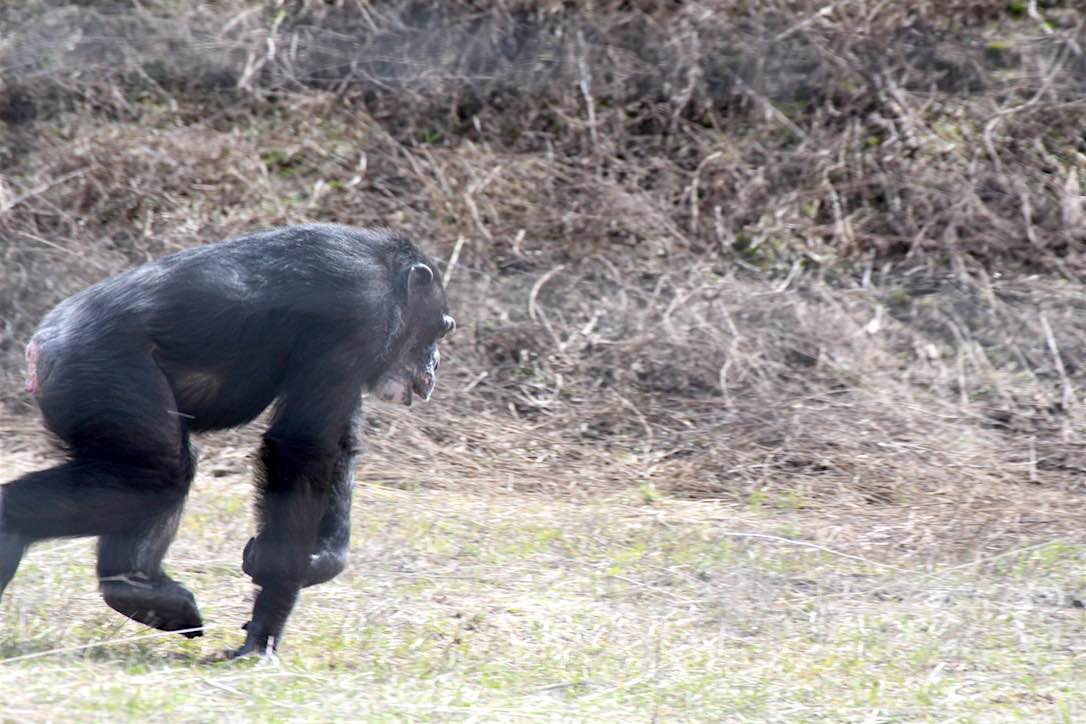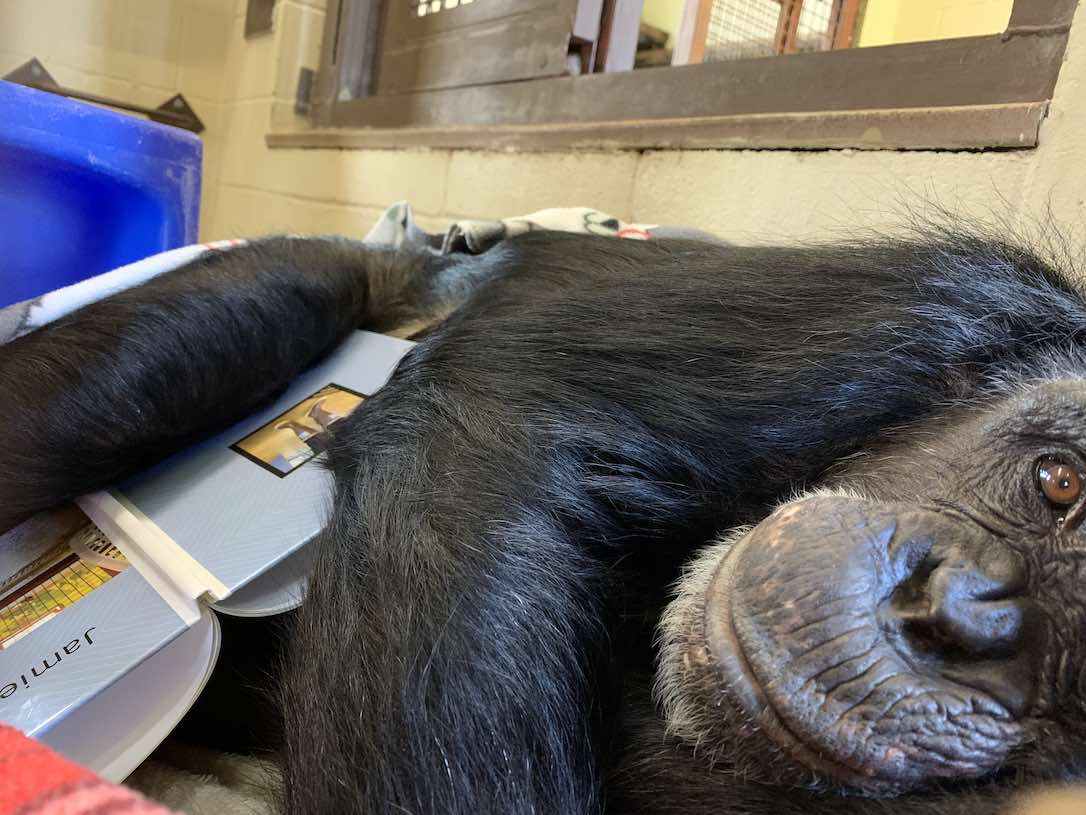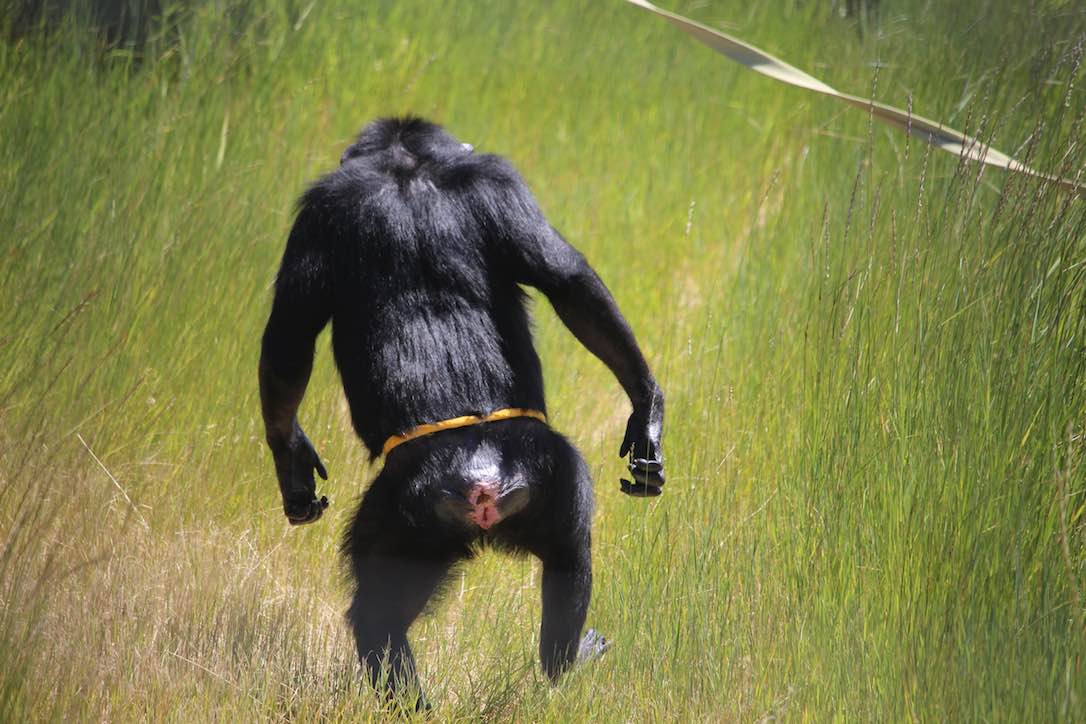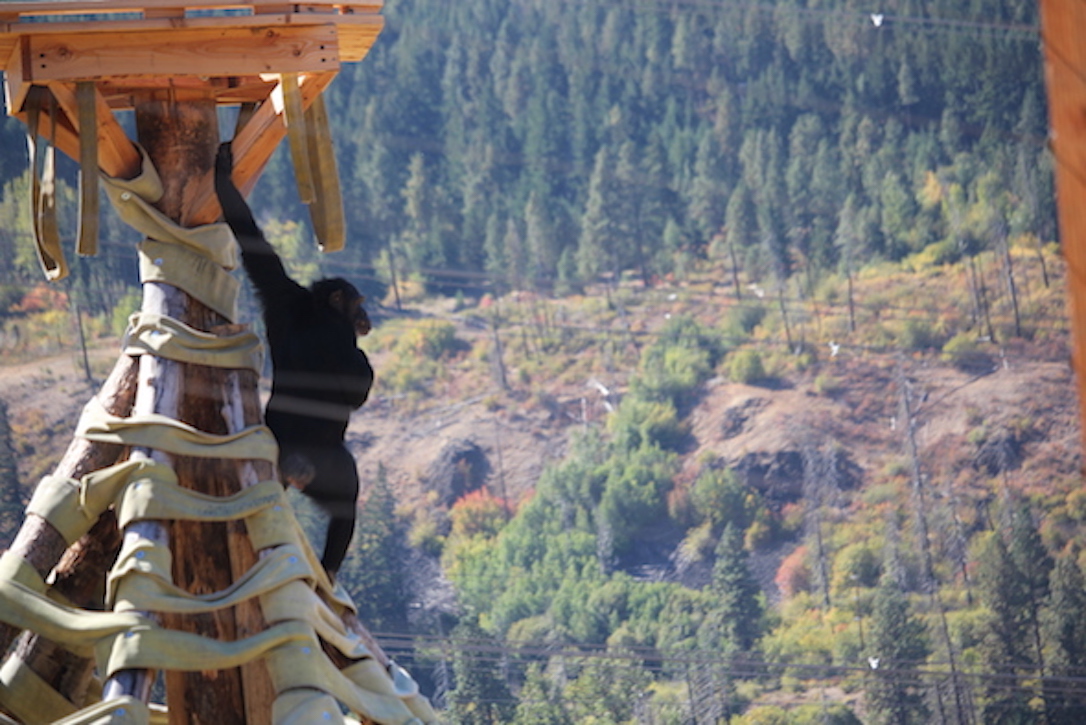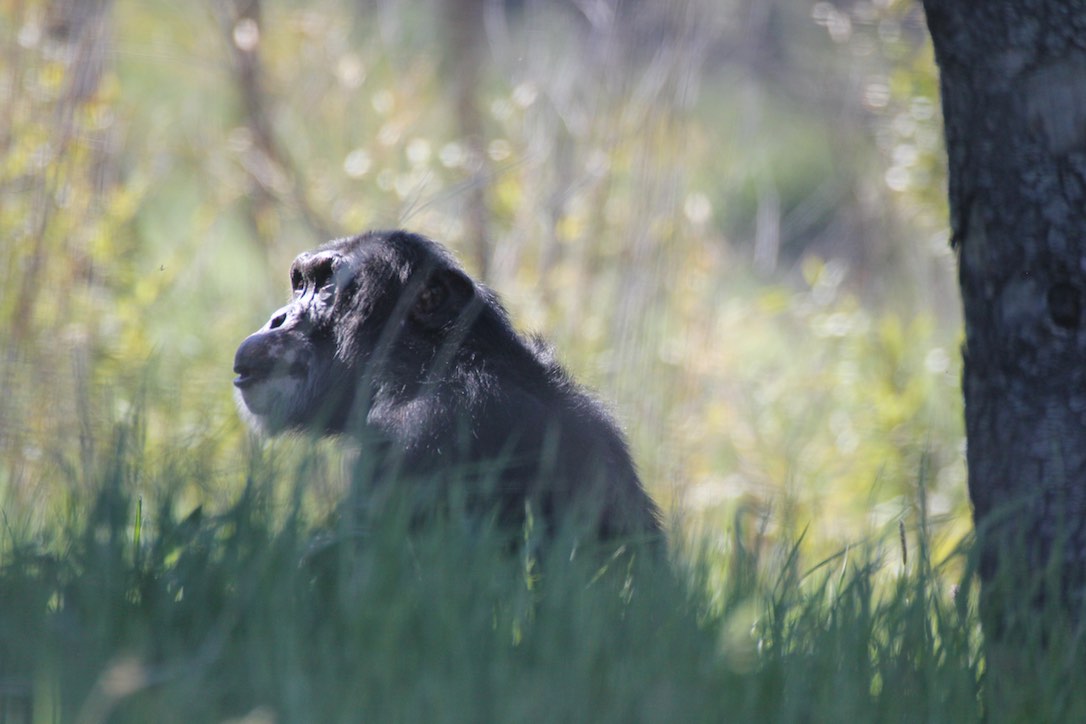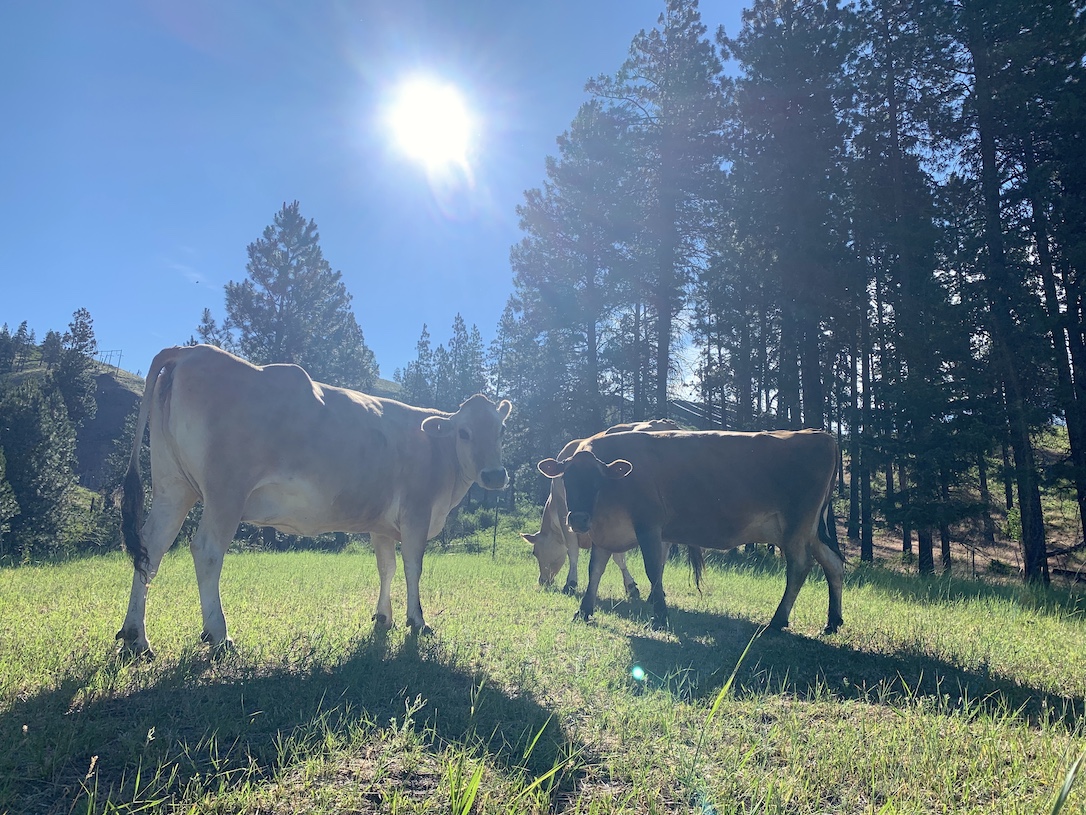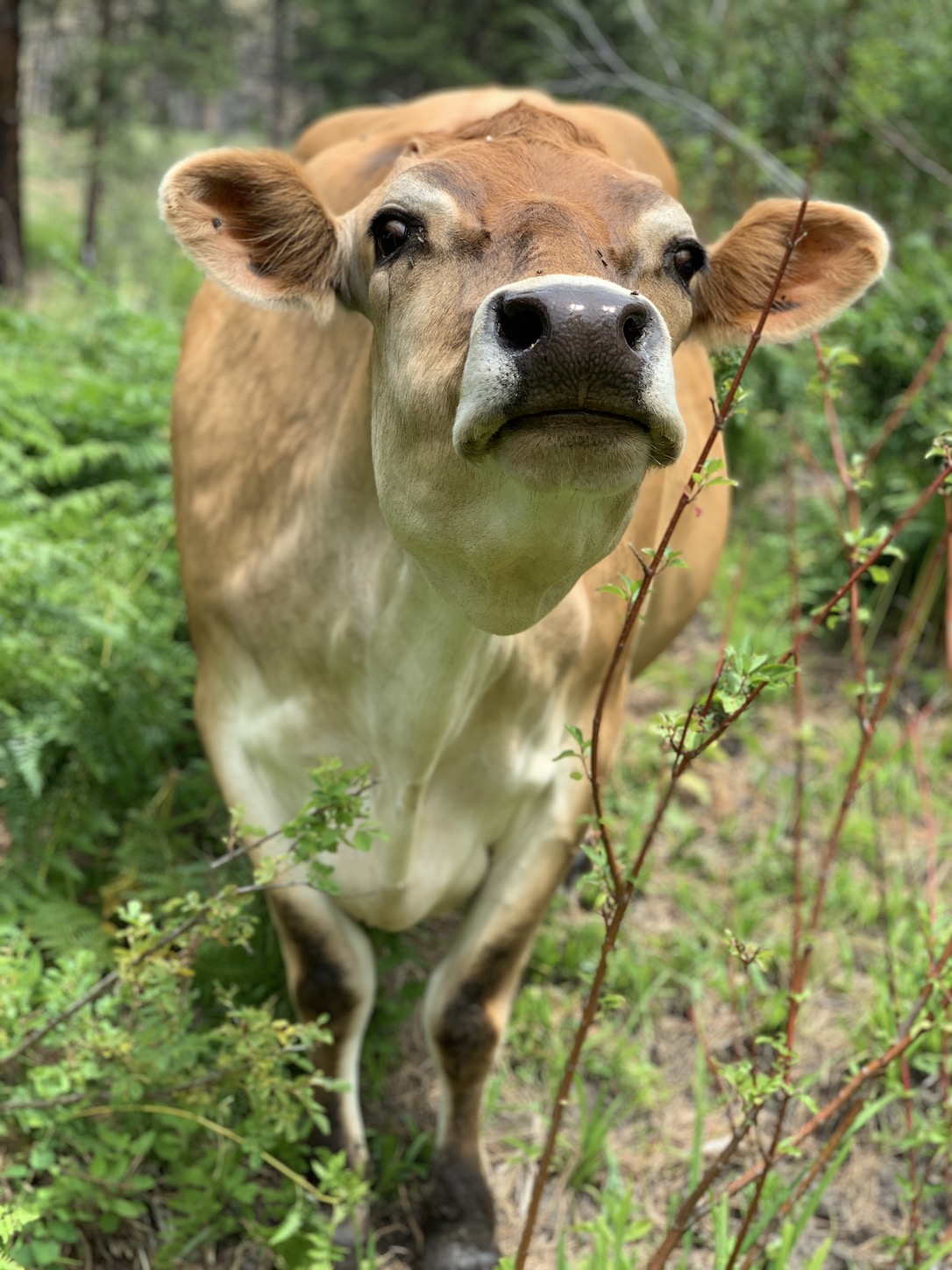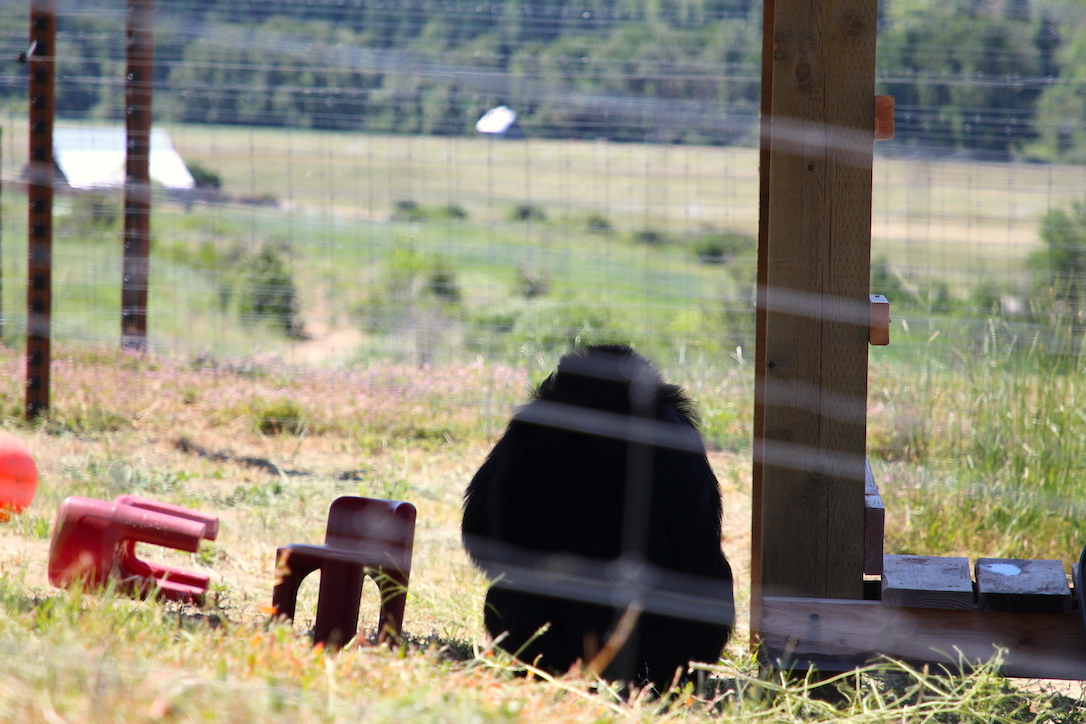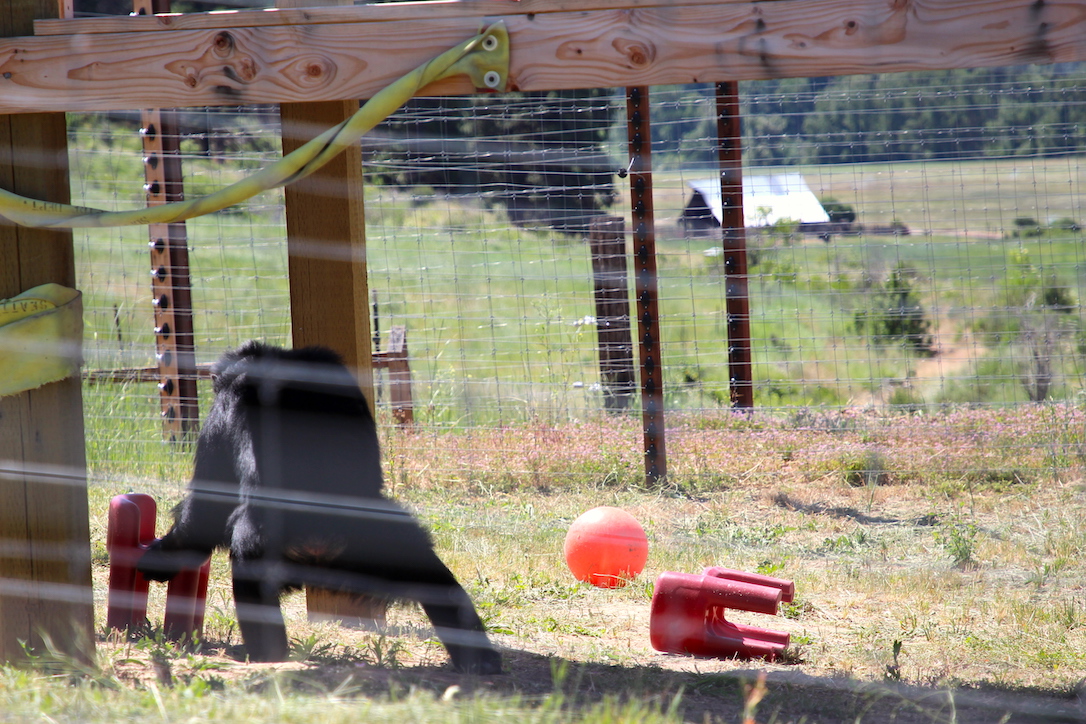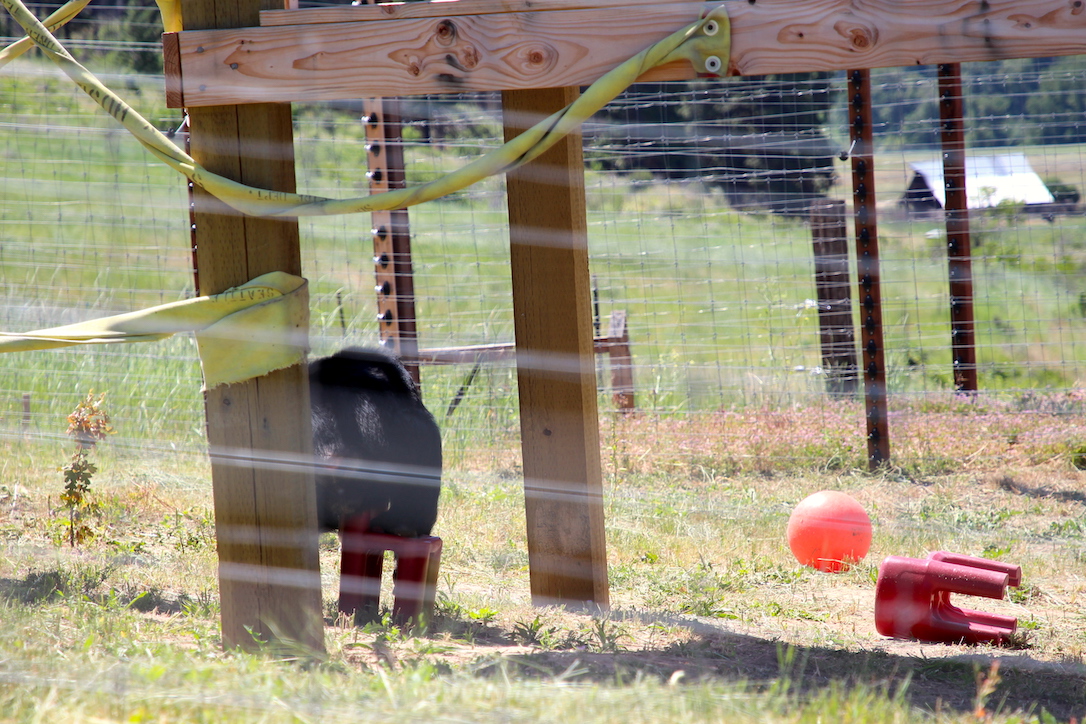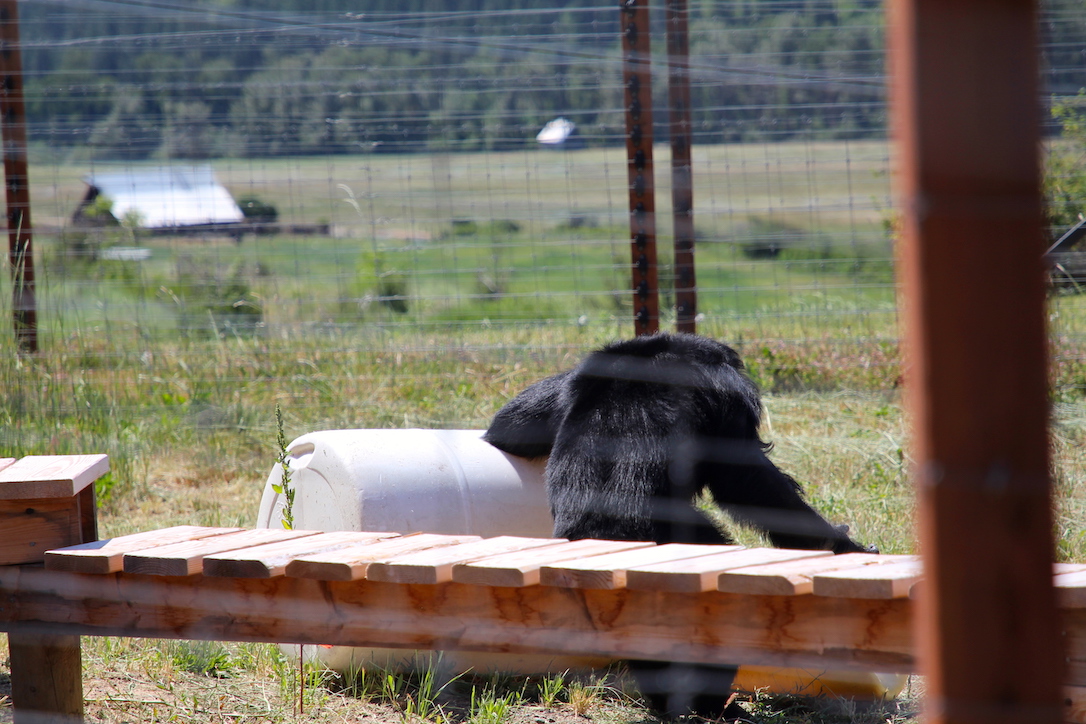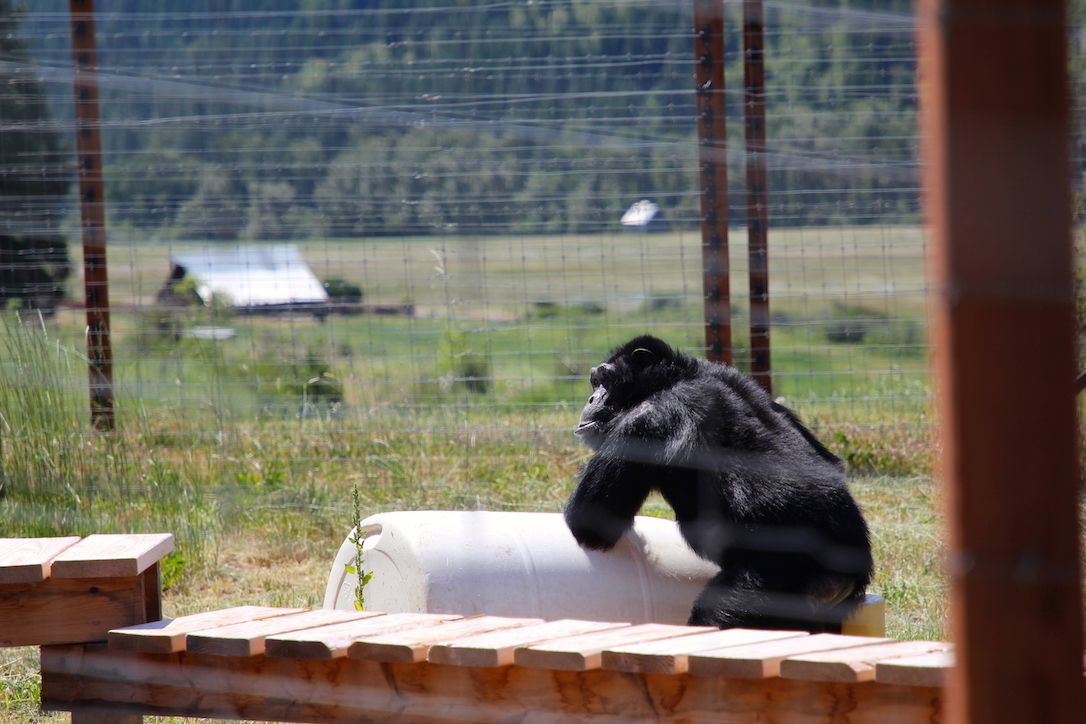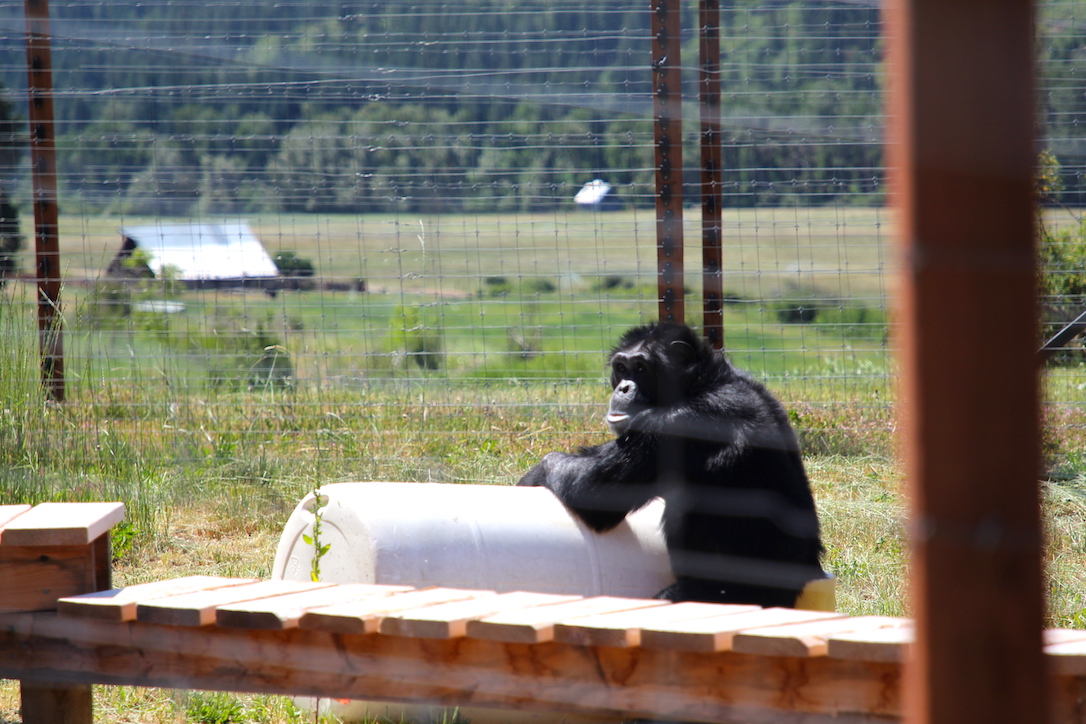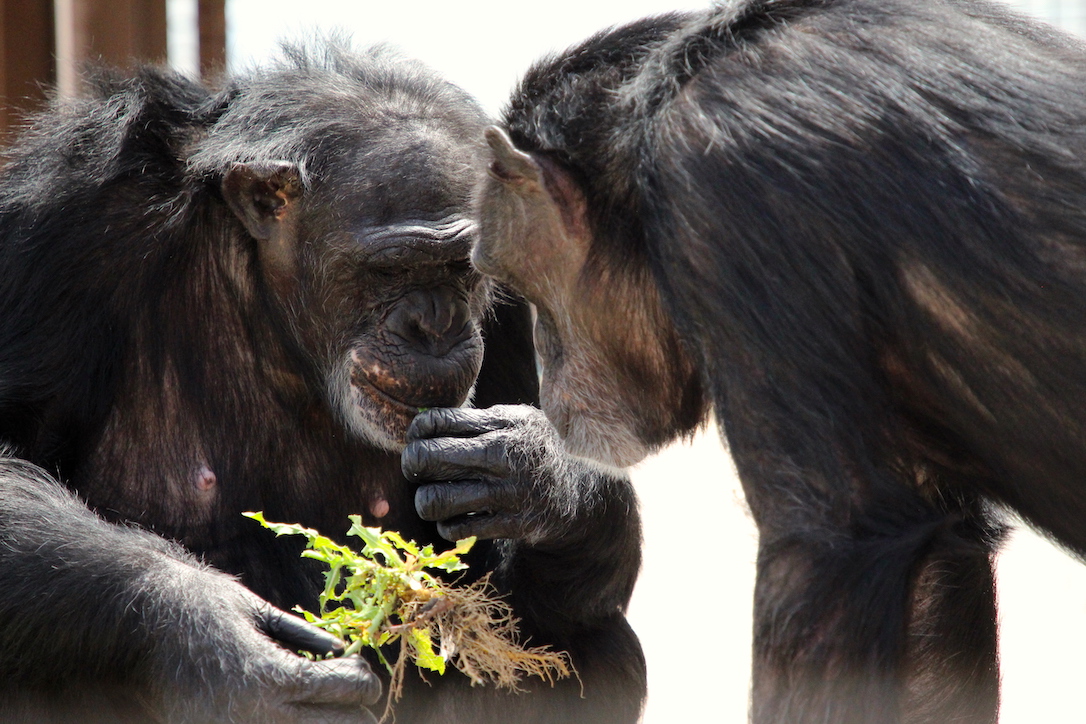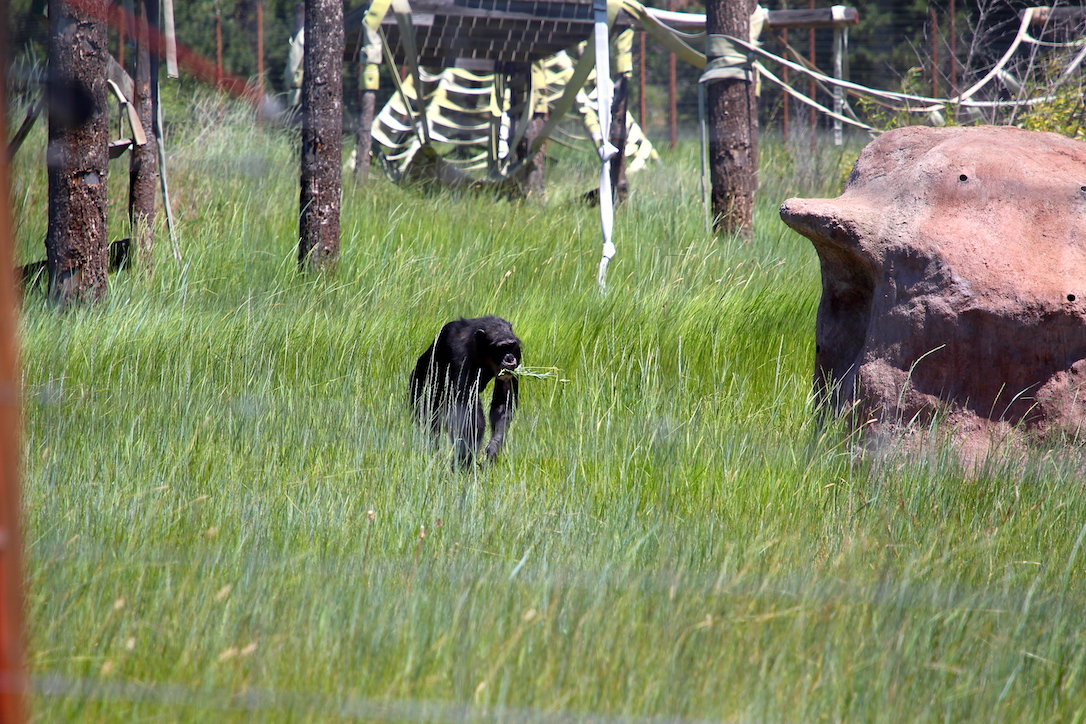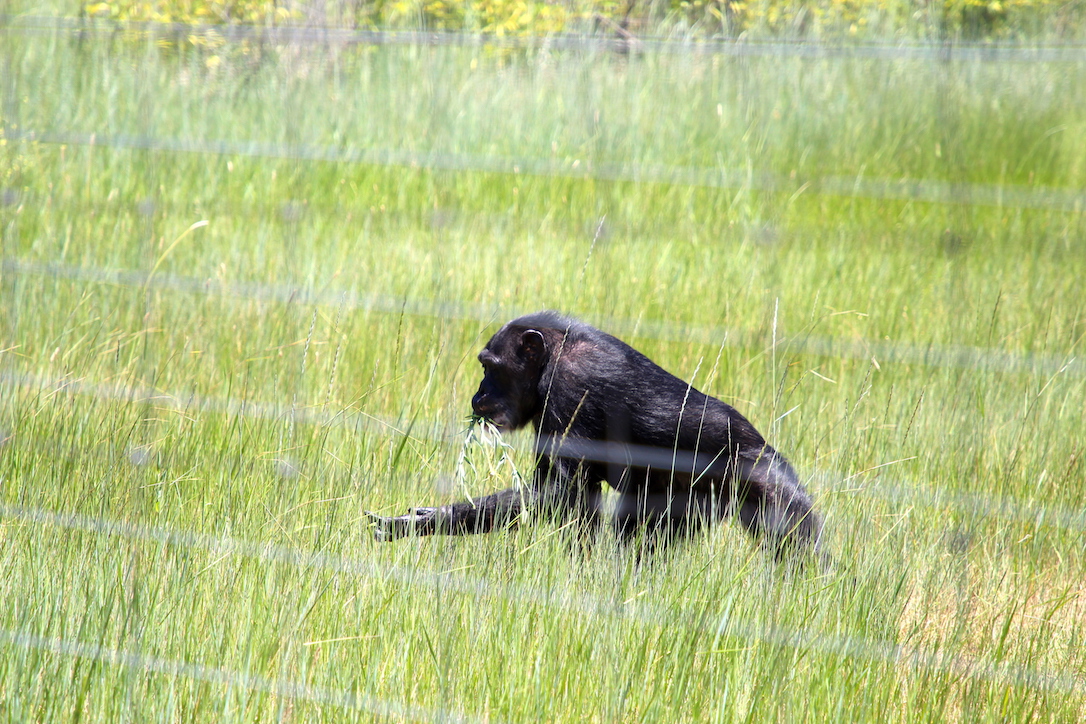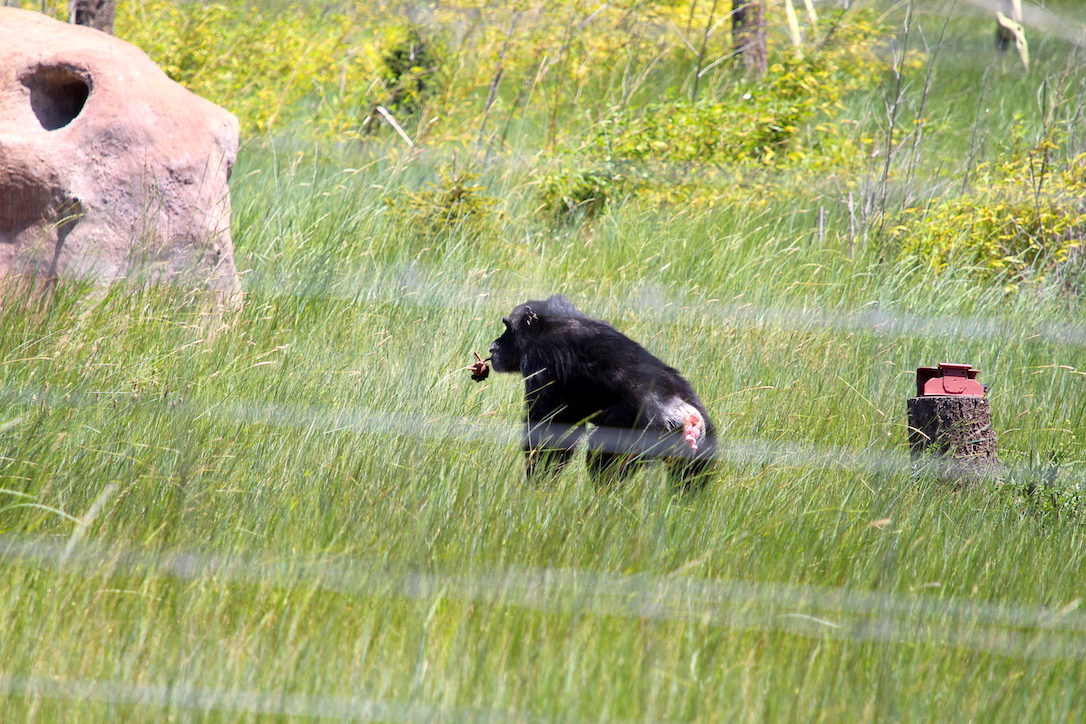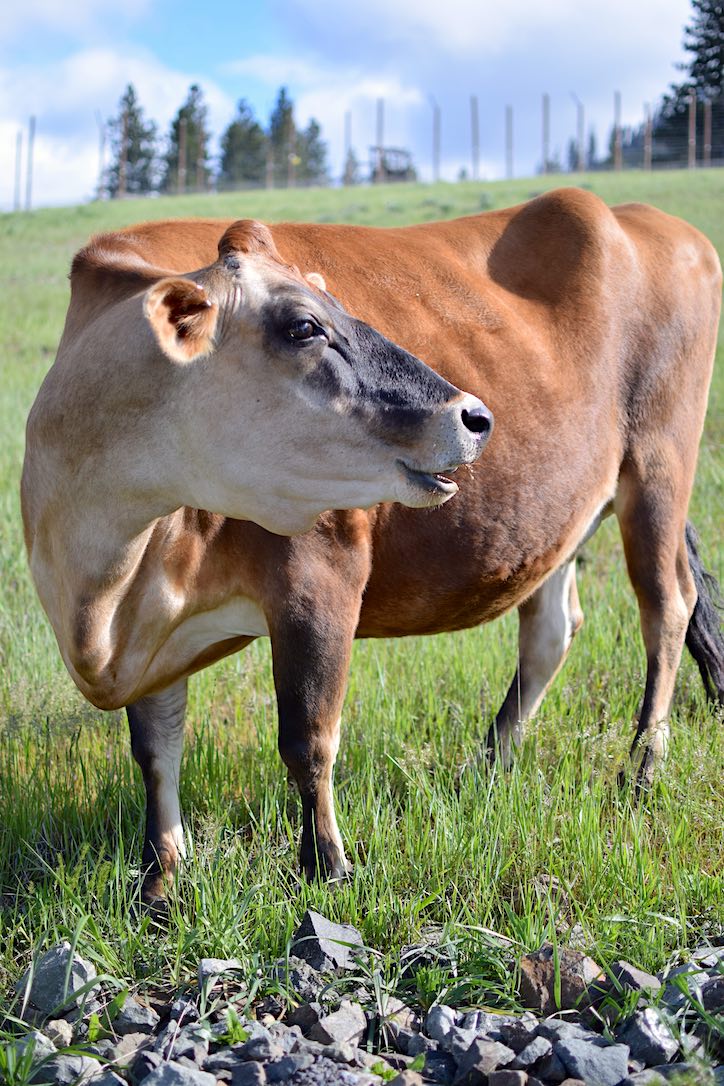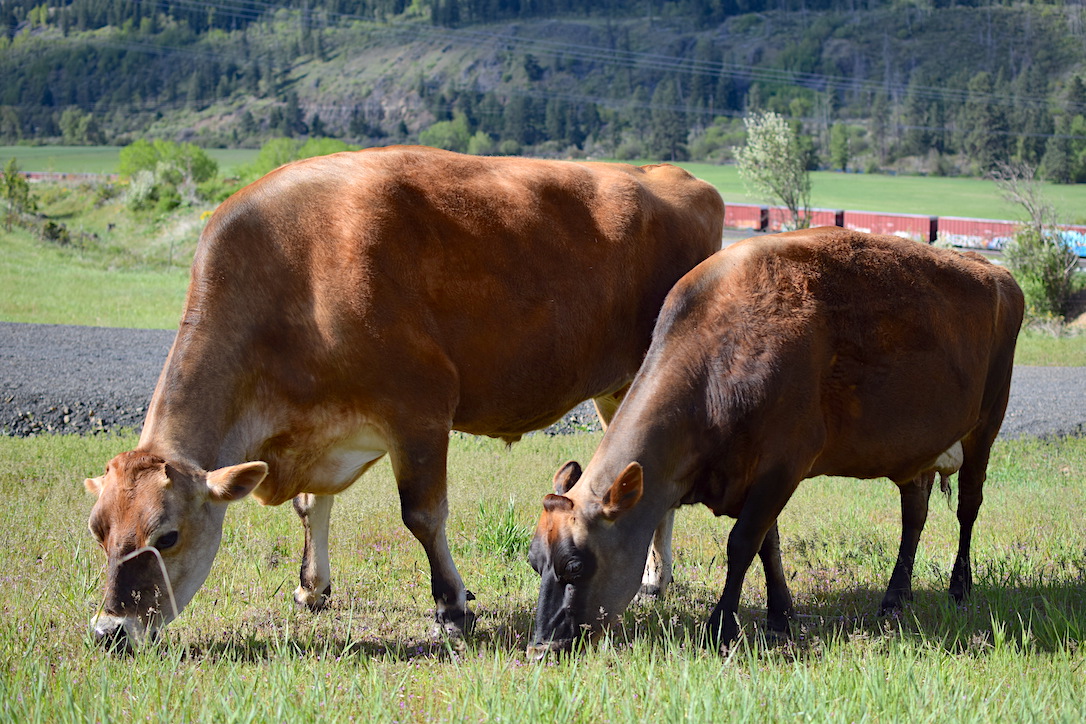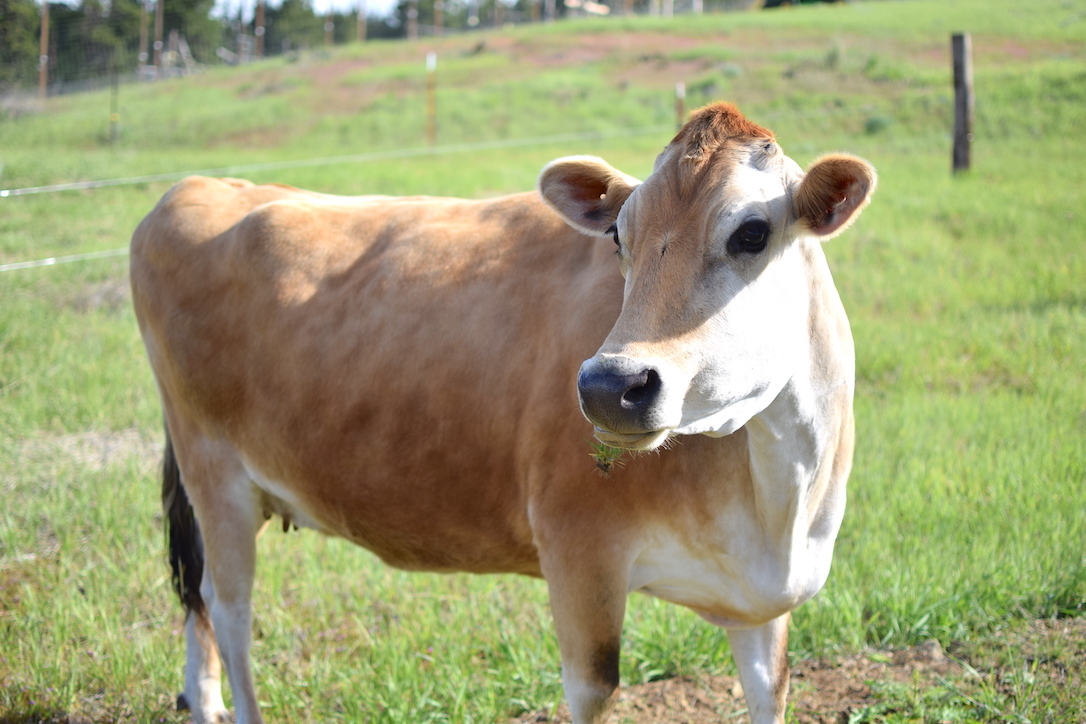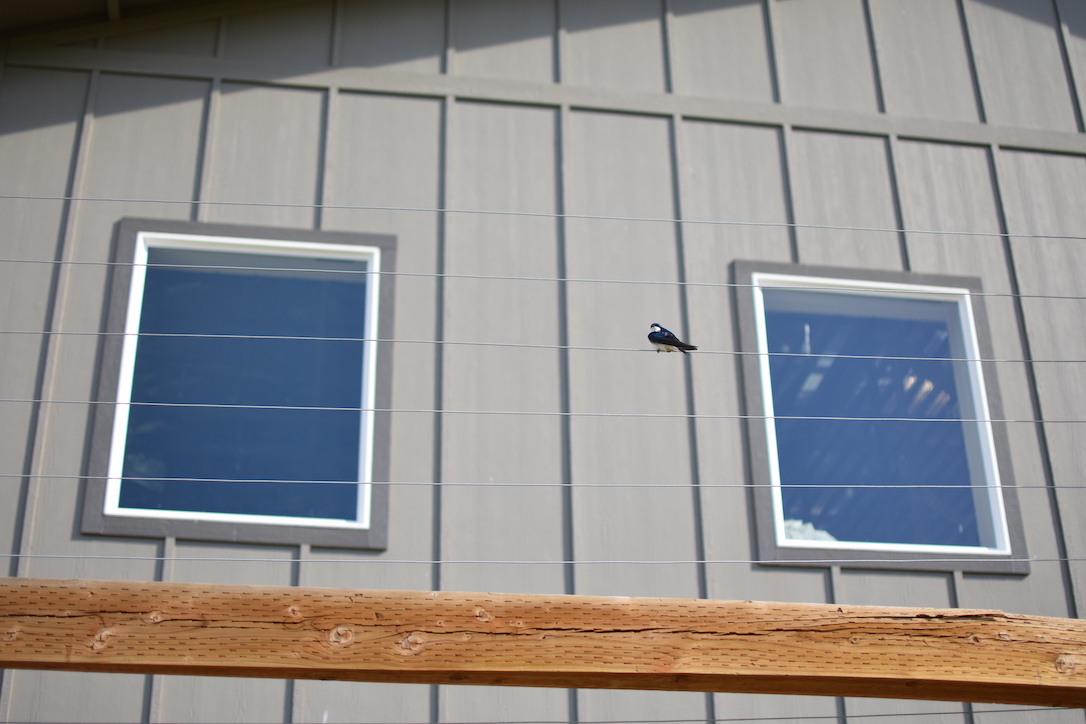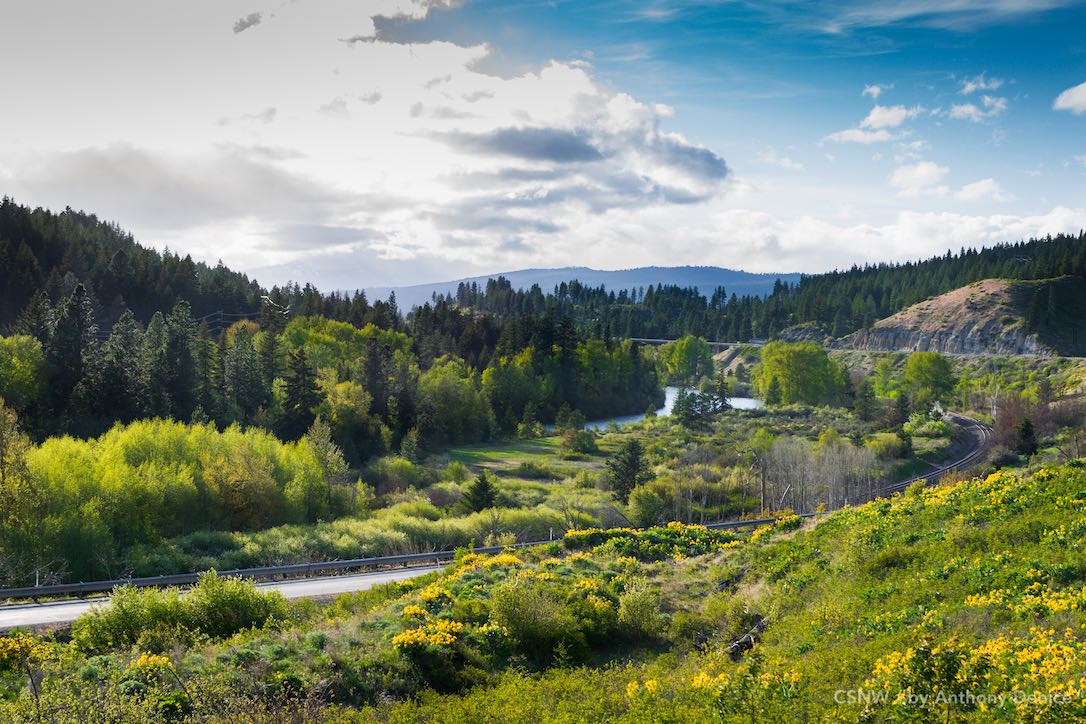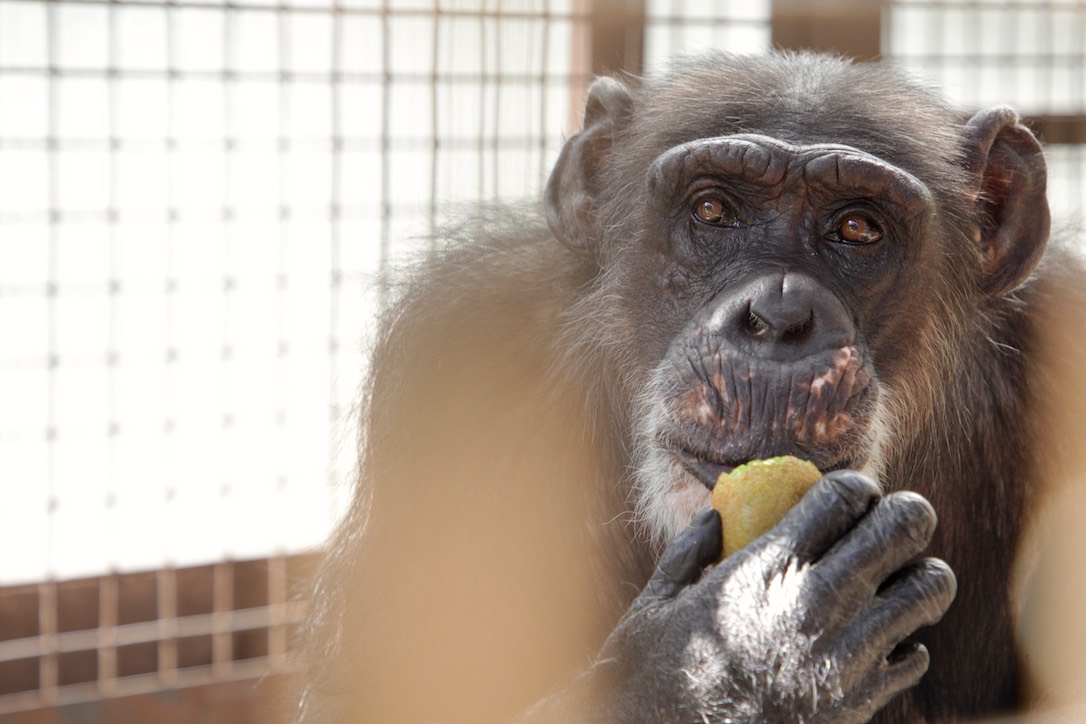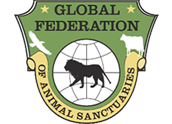If you are not in the mood to read words at the moment, watch the video above and scroll down for some photos.
Yesterday was my day to muck out the cattle barn and feed the bovine family.
The staff person assigned to “cattle care” for the day generally carries out this task after the morning duties in the chimp house – mainly serving the chimpanzees breakfast and doing a lot of cleaning.
J.B., Anna, Kelsi, and I got done with the chimp house cleaning pretty early, and I decided to finish up some donor thank yous before heading out to give the cattle their hay.
Because it’s winter, the cattle are given hay in their barn, which is on the side of the property where our home office is located. (side note: during the summer months they graze the pastures, helping with fire protection, and do not need supplemental hay.)
I tried not to look out the window too much, but I could feel them staring at me as I was finishing the thank yous. They are quite aware of the schedule and they are not shy to remind us when we are behind.
One funny thing – they had hay leftover from yesterday; they almost always do, but that does not matter. They want the new hay and they want it delivered on time.
Thank yous complete, I went to the old barn on the property and wrestled a half-opened bale of hay into our gator (utility vehicle). I was quite aware as I was struggling to do this that if anyone had been watching they may have thought I was attempting to perform some sort of slap-stick comedy routine; at one point I laughed out loud at myself.
I finally triumphed over the bale of hay and was able to deliver the good stuff to the bovines.
As Chad described earlier this week as part of wishing her a happy birthday, Honey is the sassiest of the bunch and does not put up with any nonsense from the humans. As they were all contentedly eating from the hay feeder, I went around to each one and pet them, even sneaking in a hug of sorts with Betsy and Nutmeg, who very graciously put up with my affection.
When I got to Honey, she looked at me askance. I touched her head gently and she flipped her head up to remove my hand. I did it again, and she repeated her head flip, but with a little less enthusiasm. And then, rather than backing away or trying to get me to back away, she returned to eating. This was progress in our slowly developing relationship, so I left it at that and left her in peace while I mucked the barn.
Four cattle leave a surprising amount to muck.
One other side note that might answer a question you have: we often use the term cattle or bovines because there are technically just three cows in the group: Honey, Betsy, and Meredith. Nutmeg is a steer (of formidable size but mostly gentle spirit), not a cow.
I finished up, luckily did not get the gator stuck in mud, and went back to the office after changing my shoes and jacket. Then I grabbed the mail to take to the post office.
As I was driving to town, I noticed that I smelled of hay and perhaps a bit of manure, and I thought to myself that this is why I love living where we do. No need to put on any airs, you know what I mean?
I reached up to scratch my head, a piece of hay fell into my lap, and my finger got stuck in what I quickly realized was smoothie.
I had served Mave, Willy B, and Honey B breakfast earlier. Honey B likes to hang on to her smoothie cup herself. She had stopped drinking from it and I reached for it, thinking she was done, and she proceeded to spit a mouthful of smoothie on my forehead. Honey B could also be described as sassy; maybe there’s something in the name.
So, for the second time that day, while all alone, I laughed out loud at myself.
What a very strange and enchanted life I have, going to the post office with chimpanzee-spit smoothie in my hair and smelling of cattle.
Truly, it is enchanted. Here’s that video which is also above. I took the first bit of this video last week and J.B. took the other clips today:
J.B. also got some great photos of Betsy and Meredith today:
